
Genentech: The Beginnings of Biotech
by
Sally Smith Hughes
He decided to restrict distribution to scientists planning experiments that he judged would not create new and possibly dangerous combinations of antibiotic resistance genes.73 In July 1974 the so-called Berg committee published a letter in Science signed by ten prominent scientists, including Boyer and Cohen. It called for a temporary moratorium on certain kinds of recombinant DNA research until a conference convened to consider the risks and develop research guidelines. The Federal Register announced in November the formation of the Recombinant DNA Advisory Committee, with a mandate to advise the NIH director on technical matters related to recombinant DNA research.74 In February 1975 a select group of about a hundred molecular biologists arrived at the now-celebrated Conference on Recombinant DNA Molecules at California’s Asilomar conference grounds to consider the technical issue of laboratory research safety, explicitly avoiding deliberation on the technology’s larger social and ethical implications.
…
Hesitation in a roiling political climate to publicize the institutions’ relationship to a company formed to commercialize recombinant DNA? A reluctance to share credit? Or another reason entirely? In the subsequent media coverage, an exultant Boyer, eager to counter critics decrying recombinant DNA as a technology capable of engineering possibly perilous bacteria, described Genentech’s pioneering use of synthetic DNA as a way to avoid any suspicion of danger: We’ve bypassed the potential hazards in recombinant DNA research. The gene is manufactured in a test tube. It’s clean and has no contaminants. This [synthetic DNA and recombinant DNA technology] bridges the gap between chemistry and biology.
…
Special thanks also to editors Karen Darling and Audra Wolfe, who helped to shape and shepherd this book. Inventing Recombinant DNA Technology I looked at the first gels [in the first recombinant DNA cloning experiment], and I can remember tears coming into my eyes, it was so nice. I mean, there it was. You could visualize your results in physical terms, and after that we knew we could do a lot of things. Herbert W. Boyer, March 28, 19941 Modern biotechnology originated in 1973 with the invention of recombinant DNA technology, a now-universal form of genetic engineering. It entails recombining (joining) pieces of DNA in a test tube, cloning (creating identical copies of DNA) in a bacterium or other organism, and expressing the DNA code as a protein or RNA molecule.
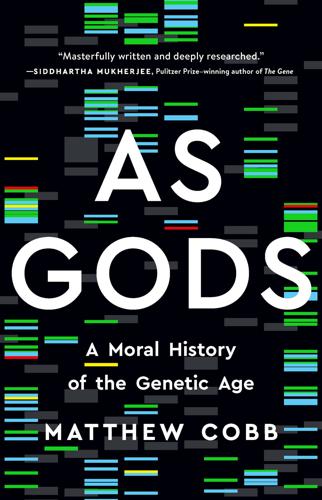
As Gods: A Moral History of the Genetic Age
by
Matthew Cobb
Published 15 Nov 2022
They argued that the results of the experiment provided ‘no basis for reassurance on the risks of recombinant DNA’. 58 Wright, S. (1986), Osiris 2:303–60, p. 320. 59 Fisher, E. (1985), Journal of Hazardous Materials 10:241–61; Lewin, M. (1982), Recombinant DNA Technical Journal 5:177–80. 60 Singer, M. (1979), in Morgan and Whelan, Recombinant DNA and Genetic Experimentation, pp. 185–6, p. 185. 61 Brenner (1978), p. 2. 62 Morgan and Whelan, Recombinant DNA and Genetic Experimentation, p. 236. 63 Grobstein, C. (1986), in R. Zilinskas and B. Zimmerman (eds), The Gene-Splicing Wars: Reflections on the Recombinant DNA Controversy (London, Collier Macmillan), pp. 3–10, p. 7. 64 Berg, P. (2000), A Stanford Professor’s Career in Biochemistry, Science Politics, and the Biotechnology Industry.
…
Boyer and his UCSF colleagues immediately took the insights of Mertz and Davis, rushing out an article that showed that the sticky ends left by EcoR1 were four bases long (AATT/TTAA).31 iv Both papers drew the same conclusion: in principle, this method made it possible to bypass Jackson and Berg’s complicated method, and ultimately, in the words of the Mertz and Davis paper, ‘to generate specifically oriented recombinant DNA molecules’.32 This was one of the earliest uses of a phrase that for decades came to be synonymous with genetic engineering: recombinant DNA. Although strictly speaking both your DNA and mine is ‘recombinant’ – it is the result of the mixing of genetic material from two parent individuals (this was the way that the word had originally been used) – the novel meaning attached to it here was that recombinant DNA came from more than one species. Nature soon highlighted both the excitement and a potential danger associated with the Jackson, Symons and Berg paper.
…
What occurred at Asilomar was relatively staid – things might have been very different had the recombinant DNA breakthrough been made five years earlier, at the height of US protests around science and its social implications. ✴ In summer 1973, when the US National Academy of Sciences received the Singer–Söll letter about the recombinant DNA discussions at the Gordon Conference, they asked Berg, as an Academy member and one of the key protagonists, to produce a position document on the safe use of recombinant DNA. Berg in turn invited a small number of colleagues, including David Baltimore and Jim Watson, to work on the question.
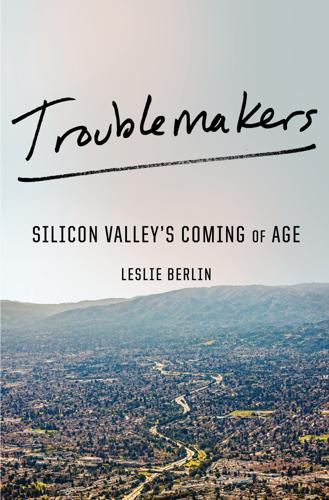
Troublemakers: Silicon Valley's Coming of Age
by
Leslie Berlin
Published 7 Nov 2017
“On the other hand, I tell a lot of jokes, and some of them you don’t want to hear about.”19 Boyer had been a regular participant in the antiwar protests in the Haight-Ashbury district just a few blocks from his lab. When he first peered through his microscope and saw evidence that the recombinant DNA process was working, he started to cry.20 Two years earlier, in 1972, Boyer’s lab had isolated an enzyme that could clip apart a strand of DNA.II Once clipped, DNA from another source could be inserted.21 At the time, Boyer had not known if a molecule with its new “recombined” DNA was a lab curiosity, or if, inside a cell, the molecule (or gene(s) in the recombined DNA) would be reproduced intact as the cells divided. Cohen, meanwhile, had developed a method that could help resolve Boyer’s uncertainty.
…
Some chanted, “We will not be cloned,” while others blocked the dais with a banner that read, in huge block letters, “ ‘We will create the perfect race.’ Adolf Hitler—1933.”10 Reimers and attorney Bert Rowland passed clippings on recombinant DNA technology—90 percent of them negative—back and forth like baseball cards. By the end of 1977, Reimers’s clippings file on recombinant DNA politics was three inches thick. Meanwhile, the controversy had prompted the Department of Health, Education, and Welfare to launch a years-long review of its policies around institutional patent agreements.11 One historian has claimed that “recombinant DNA patenting caused so much controversy that it threatened to torpedo federal patent policy.”12 And Reimers still faced objections within his own university.
…
So between cheap meals on the Ping-Pong table that also served as his desk and dining table at home, he cold-called scientists who had attended the Asilomar conference on recombinant DNA almost a year earlier. “I’m a businessman interested in recombinant DNA,” he would begin. Could he ask them a few questions? Some researchers said no. Others offered vague answers to the questions that Swanson considered essential: How long until recombinant DNA could be commercialized? When could the cutting-edge science be used to mass-produce something he could sell? It would be a while, the scientists said. The technology wasn’t there yet.

The Gene: An Intimate History
by
Siddhartha Mukherjee
Published 16 May 2016
In Britain, a committee was formed to address the “potential benefits and potential hazards” of recombinant DNA and gene cloning. In France, reactions to the letter were published in Le Monde. That winter, François Jacob (of gene-regulation fame) was asked to review a grant application that proposed inserting a human muscle gene into a virus. Following Berg’s footsteps, Jacob urged tabling such proposals until a national response to recombinant DNA technology had been drafted. At a meeting in Germany in 1974, many geneticists reiterated a similar caution. Sharp constraints on experiments with recombinant DNA research were essential until the risks had been delineated, and recommendations formalized.
…
In May, the San Francisco Chronicle ran: “Getting Bacteria to Manufacture Genes,” San Francisco Chronicle, May 21, 1974. Cohen also received: Roger Lewin, “A View of a Science Journalist,” in Recombinant DNA and Genetic Experimentation, ed. J. Morgan and W. J. Whelan (London: Elsevier, 2013), 273. Cohen and Boyer filed a patent: “1972: First recombinant DNA,” Genome.gov, http://www.genome.gov/25520302. “to commercial ownership of the techniques for cloning all possible DNAs”: P. Berg and J. E. Mertz, “Personal reflections on the origins and emergence of recombinant DNA technology,” Genetics 184, no. 1 (2010): 9–17, doi:10.1534/genetics.109.112144. Swanson came to see Boyer in January 1976: Sally Smith Hughes, Genentech: The Beginnings of Biotech (Chicago: University of Chicago Press, 2011), “Prologue.”
…
Michael, 373–74, 375 Balfour, Arthur James, 1st Earl of, 76 Baltimore, David, 223, 227, 229, 230, 231, 476 Banting, Frederick, 216, 240 Barrangou, Rodolphe, 470 Barranquitas, Venezuela, families, and Huntington’s disease, 284–86, 288, 289 Basset Hound Club Rules (Millais), 69 Bateson, William, 61–63 de Vries’s research and, 62 eugenics proposals and, 74 Galton’s theory and, 69, 72–73 Mendel’s research discovered by, 61–63, 61n transmission of hereditary traits and, 70–71 Weldon’s criticism of, 69–70 Beadle, George, 161–63, 314 background and training of, 161–62 gene-to-trait connection research of, 162–63 Beagle (ship), 28, 31–33 Beery, Alexis and Noah, 451 behavior environment and, 379–80, 387 genes and, 14, 367, 372, 378, 379, 380, 382, 384, 387, 408, 459–60, 480, 487 illness as consequence of, 494 personality archetypes and, 385 twin studies of, 381, 382, 383, 384, 487 behavioral therapy in hyperactivity syndrome, 491 in sexual reassignment, 364, 366, 380 behavior problems, feeblemindedness diagnosis for, 79, 80, 81–82 Bell Curve, The (Herrnstein and Murray), 343, 346–48 Bell, Alexander Graham, 76 Bell, John, 82, 84 Belsky, Jay, 460 Bengal, Partition of, 4–5, 493 Berg, Paul, 222, 234, 475 Asilomar I meeting on biohazards in research and, 226–27 Asilomar II recommendations on recombinant DNA from, 231–33, 237, 425 background and training of, 203–04 “Berg letter” on benefits and hazards of recombinant DNA from, 228 estimation of risk involved in using SV40 considered by, 210 “future’s future” discussion at Erice with students, 225–26, 417–18, 437 gene cloning and, 215–16, 227, 237, 238, 408 on gene-environment interactions, 485 insertion of foreign gene into SV40 by, 203–05, 205n recombinant DNA creation by, 206–08, 210–11, 212–13, 214, 291, 503 on Watson’s research, 230 Bernal, J.
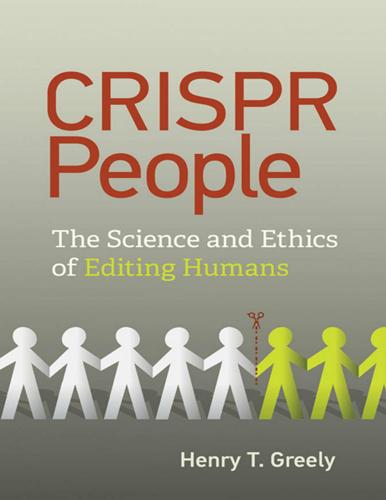
CRISPR People: The Science and Ethics of Editing Humans
by
Henry T. Greely
Published 22 Jan 2021
You may well be wondering what this digression into the history of recombinant DNA, patenting, and Nobel Prizes—as interesting as its parallels to CRISPR may be—has to do with ethics, the topic of this chapter. As far as Berg’s Nobel Prize goes, no one doubts that he and his lab made major contributions to the field and were driving forces in its advance, but Berg had another role that made him stand out from the rest of the recombinant DNA crowd. He was a leader, arguably the leader, in organizing a temporary moratorium on recombinant DNA research and in organizing and running the famous 1975 Asilomar Conference on recombinant DNA at which the moratorium was discussed.
…
Their publications, and others, carried stories about the conference, in publications as different as the New York Times, Wall Street Journal, Frankfurter Allgemeine Zeitung, Nature, and Rolling Stone.16 And the world was talking about recombinant DNA and about science’s effort to police itself. Asilomar does have some ironies. First, it focused on the physical safety risks of recombinant DNA research, the chance that a life-form with recombinant DNA could harm lab workers, the public, or the environment. It did not discuss broader questions—of playing God, designer babies, hubris—that, then and now, would fascinate, and scare, the public.
…
More than 15 years ago, I reviewed two books about changing a human’s DNA in ways that would get into the eggs or sperm and possibly be passed down to future generations,1 but even then, the debate had been raging for decades. This chapter looks at those discussions up to the disclosure of He’s experiment, in two parts: the early discussions of recombinant DNA technology, notably at the famous Asilomar Conference, and the more focused discussions after the development of CRISPR as a genome editing system. Along the way, it takes a look at some of the people, “CRISPR people,” although not “CRISPR’d people,” who were involved. Asilomar and the Ethics of Recombinant DNA Before the realization that DNA was the basis for human genetic inheritance and the knowledge, with Watson and Crick’s discovery of DNA’s structure, of the importance of DNA sequence, the discussion would not have been of “editing,” as the analogy between the genome and a book (or a blueprint) did not exist.
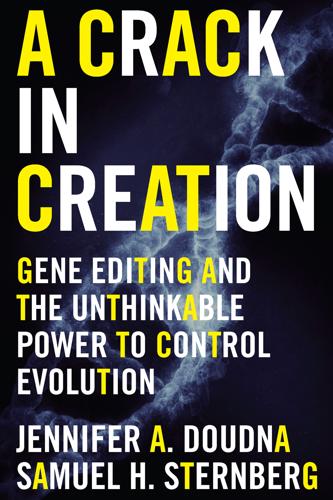
A Crack in Creation: Gene Editing and the Unthinkable Power to Control Evolution
by
Jennifer A. Doudna
and
Samuel H. Sternberg
Published 15 Mar 2017
The meeting in 1973—eventually known as Asilomar I—focused on the DNA of cancer viruses and the risks they posed; it did not directly address the new recombinant DNA experiments Berg was considering. That same year, however, scientists held a second conference focused specifically on gene splicing. The concerns raised at this meeting led scientists to request that the National Academy of Sciences establish a committee to formally investigate the new technology. Berg would serve as the chairman of this group, the Committee on Recombinant DNA Molecules, which met at MIT in 1974. Soon after the meeting, they released a notable report titled “Potential Biohazards of Recombinant DNA Molecules.” The “Berg letter,” as it’s often called, issued an unprecedented summons for a worldwide moratorium on experiments the committee deemed most hazardous—those aimed at creating antibiotic resistance in new bacterial strains and those aimed at creating DNA hybrids with cancer-causing animal viruses.
…
Berg, “Biochemical Method for Inserting New Genetic Information into DNA of Simian Virus 40: Circular SV40 DNA Molecules Containing Lambda Phage Genes and the Galactose Operon of Escherichia coli,” Proceedings of the National Academy of Sciences of the United States of America 69 (1972): 2904–9. a notable report titled “Potential Biohazards of Recombinant DNA Molecules”: P. Berg et al., “Letter: Potential Biohazards of Recombinant DNA Molecules,” Science185 (1974): 303. Much has been written about Asilomar II: Institute of Medicine (US) Committee to Study Decision Making; K. E. Hanna, ed., Biomedical Politics (Washington, DC: National Academies Press, 1991); M. Rogers, Biohazard (New York: Knopf, 1977); P. Berg and M. F. Singer, “The Recombinant DNA Controversy: Twenty Years Later,” Proceedings of the National Academy of Sciences of the United States of America 92 (1995): 9011–13.
…
The Berg letter also included three other recommendations: first, that scientists adopt a cautious approach to any experiments designed to fuse animal and bacterial DNA; second, that the National Institutes of Health establish an advisory committee to oversee future issues surrounding recombinant DNA; and third, that an international meeting be convened so that scientists from around the world could review recent progress in the field and compare notes on how to deal with potential hazards. This last recommendation would result in the International Congress on Recombinant DNA Molecules, held back in Asilomar in February 1975. Much has been written about Asilomar II. Roughly a hundred and fifty people attended, mostly scientists but also lawyers, government officials, and members of the media.
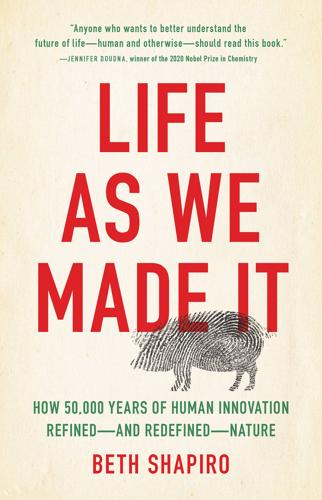
Life as We Made It: How 50,000 Years of Human Innovation Refined--And Redefined--Nature
by
Beth Shapiro
Published 15 Dec 2021
If the experiment succeeded, he would have developed a new system to insert DNA into genomes, and the perfect system for studying gene function. In 1972, Berg’s lab cut open the circular genomes of SV40 and lambda virus and spliced the two virus genomes together. This created the world’s first “recombinant DNA”—a genome engineered to have combined (or, in the parlance of genetics, recombined) DNA from more than one organism. They intended to insert their recombinant DNA into the bacterium Escherichia coli, as lambda virus naturally infects E. coli. Before the experiment was scheduled to take place, however, Janet Mertz, a graduate student and key member of Berg’s team, disclosed the plan to scientists at the Cold Spring Harbor Lab, where she was taking a course.
…
By the end of the conference, the attendees had written and sent a letter to the National Academy of Sciences and the Institute of Medicine, asking them to establish a committee to consider the hazards of recombinant DNA research. The letter underscored the potential of recombinant DNA experiments to advance science and improve human health but also raised concerns over the still-unknown outcomes of recombining DNA in a lab. The scientists wanted a better understanding of what controls and containment protocols should be in place to protect people working in the lab and to protect the public at large. They wanted to be proactive rather than reactive.
…
A committee was formed, a temporary moratorium was declared on research creating recombinant organisms, and an international meeting was planned to decide the future of recombinant DNA research. While these measures were intended to assuage public concerns, they—unfortunately—had the opposite effect. Sensing that scientists feared the worst, protests began against recombinant DNA technology even before the technology could be evaluated. Jeremy Rifkin, who takes credit for starting the anti-GMO movement, raised money by frightening the public into believing that people were going to be cloned (recombinant DNA technology is not cloning). Concerned members of the public lobbied their government representatives to stop the research.

Whole Earth Discipline: An Ecopragmatist Manifesto
by
Stewart Brand
Published 15 Mar 2009
In 1977, two years after Asilomar, the California legislature was threatening to regulate recombinant DNA research in the state, so James Watson, the codiscoverer of the structure of DNA and director of the renowned Cold Spring Harbor Laboratory, came to visit. Watson had been an early supporter of the moratorium on recombinant DNA research and had helped to organize Asilomar. In a short talk to a group including Brown, the governor’s staff, and some legislators and press, Watson said:My position is that I don’t regard recombinant DNA as a major or plausible public health hazard, and so I don’t think that legislation is necessary.
…
) • The whole GE controversy was foreshadowed—and should have been settled—in the mid-1970s when recombinant DNA hit the fan. The technique, then called “gene splicing,” emerged from a series of discoveries and inventions that culminated by 1974 in the ability to blend genes from various sources, including humans, into bacteria. One of the first applications was meant to be a cheaper, safer way to generate large quantities of insulin for treating diabetes. Everyone realized this was going to be an immensely powerful technology. Some of the scientists worried that potentially harmful strains of bacteria could be created, and they called for a moratorium on recombinant-DNA research until the hazards could be sorted out.
…
Monstrous organisms would be created, environmentalists said, that could threaten everything living. There would be insulin-shock epidemics and tumor plagues. The Cambridge and Berkeley city councils—both cities the home of major universities—outlawed recombinant-DNA research. The U.S. Congress began introducing restrictive legislation. That was the atmosphere that led to the Asilomar Conference on Recombinant DNA Molecules in California in February 1975. Coming from all over the world, some 146 genetic scientists and related professionals convened for four days to regulate their research. They instituted an array of laboratory containment practices and mandated the use of organisms that could not live outside the lab.

The Code Breaker: Jennifer Doudna, Gene Editing, and the Future of the Human Race
by
Walter Isaacson
Published 9 Mar 2021
They agreed to work together on the idea, and within four months they had spliced together DNA fragments from different organisms and cloned millions of them, giving birth to the field of biotechnology and launching the genetic engineering revolution.2 One of Stanford’s alert intellectual property lawyers approached them and, to their surprise, offered to help them file a patent application. In 1974 they did, and it was eventually approved. It had not fully occurred to them that one could patent recombinant DNA processes, which are found in nature. It didn’t occur to other scientists either, and many were furious—especially Paul Berg, who had made the original breakthroughs on recombinant DNA. He called the claims “dubious, presumptuous, and hubristic.”3 * * * In late 1975, a year after the Cohen-Boyer patent application was filed, a struggling young wannabe venture capitalist named Robert Swanson started making unsolicited phone calls to scientists who might be interested in starting a genetic engineering company.
…
Thus we have pasteurized milk, juice, and wine. The modern biotechnology industry was born a century later, when a Stanford attorney approached Stanley Cohen and Herbert Boyer and convinced them to file for a patent on the method they had discovered for manufacturing new genes using recombinant DNA. Many scientists, including Paul Berg, the discoverer of recombinant DNA, were horrified at the idea of patenting a biological process, but the royalties that flowed to the inventors and their universities quickly made biotech patents popular. Stanford, for example, made $225 million in twenty-five years by granting hundreds of biotech companies non-exclusive licenses to the Cohen-Boyer patents.
…
Known as “Asilomar I” because it launched a process that would culminate two years later at the same conference site, the meeting focused mainly on lab safety issues. It was followed in April by a conference organized by the National Academies of Science at MIT, which discussed how to prevent the creation of recombinant DNA organisms that could be dangerous. The more the participants discussed it, the less sure they became that any method would be foolproof. So they issued a letter—which was signed by Berg, James Watson, Herbert Boyer, and others—calling for a “moratorium” on the creation of recombinant DNA until safety guidelines could be formulated.7 This led to a memorable gathering that would become famous in the annals of scientists attempting to regulate their own field: the four-day Asilomar conference of February 1975.

Warnings
by
Richard A. Clarke
Published 10 Apr 2017
Paul Berg and his student, Janet Mertz, did exactly that, combining two separate molecules of DNA into a single strand, creating the first artificially engineered recombinant DNA molecule. But concern over safety issues gave Berg pause. Scientists debated the biohazard risks that would arise if an engineered organism, like a highly virulent, cancer-causing bacterium, escaped from the laboratory. Some questioned if recombinant DNA experiments should be carried out at all.16 Three years later, Dr. Berg was the chairman of the Organizing Committee for the International Conference on Recombinant DNA, charged with developing guidelines and recommendations as humans forged ahead with genetic experimentation.
…
The statement also called for a voluntary worldwide moratorium on genetic experimentation that could severely endanger public health, such as those involving highly pathogenic organisms and toxic genes.17 The guidelines served as the basis for the National Institutes of Health guidelines that later governed use of the technology, and they have functioned as a successful template for the safe undertaking of recombinant DNA experiments ever since. Fears that recombinant DNA experiments could unleash a public health disaster were never realized. Moreover, early excitement at the promise of recombinant DNA also gave way to the reality that manipulating DNA, precisely specifying the cutting location, proved surprisingly tricky. It remained that way until Professor Doudna’s CRISPR breakthrough. Still, Asilomar is credited with serving an even more important role.
…
F. Griffiths et al., Making Recombinant DNA: An Introduction to Genetic Analysis, 7th ed. (New York: Freeman, 2000). The conference was hosted by the National Center for Biotechnology Information. 16. The Paul Berg Papers: Recombinant DNA Technologies and Researchers’ Responsibilities, 1973–1980, Profiles in Science, National Library of Medicine, National Institutes of Health, https://profiles.nlm.nih.gov/ps/retrieve/Narrative/CD/p-nid/260 (accessed Oct. 11, 2016). 17. Paul Berg, David Baltimore, et al., “Summary Statement of the Asilomar Conference on Recombinant DNA Molecules,” Proceedings of the National Academy of Sciences of the United States of America 72, no. 6 (June 1975): 1981–84. 18.

P53: The Gene That Cracked the Cancer Code
by
Sue Armstrong
Published 20 Nov 2014
Often they would tip biological waste that contained bacteria down the drain at the end of experiments, or draw up solutions by mouth with a pipette. As the critics pointed out tartly in a report on the possible hazards some time later, ‘A micro-organism is not simply a “warm body” to house a recombinant DNA molecule of interest.’ In 1974 a number of leading scientists stopped their work on recombinant DNA pending a formal debate on the way forward for laboratories using this technology. The following year the intense soul-searching among scientists, and the equally volatile debate that had begun in the world’s media, culminated in an international conference held at the Asilomar Center, a magnificent old lodge built of warm local wood and stone overlooking the Pacific near Monterey, California.
…
Looking back across the years, David Baltimore, who won the Nobel Prize for Medicine in 1975 for his work with viruses and was one of the organisers of the conference, said, ‘Recombinant DNA was the most monumental power ever handed to us. The moment you heard you could do this, the imagination went wild.’ In fact, so exciting was it, and so potentially scary, that the attempt to reach consensus on the way forward among the disparate group of 133 scientists gathered at Asilomar – debating under the watchful eyes and listening ears of 16 journalists and four lawyers – was extremely difficult. What eased the process was the decision to divide the types of experiments using recombinant DNA into several categories – depending on whether they involved organisms or fragments of DNA known to cause disease or pose other dangers, or used materials considered harmless – and making recommendations about how to proceed under different scenarios.
…
The bacterium most commonly used as a vehicle for the scientists’ experiments was Escherichia coli (E. coli), because it readily takes up new genes, is tough and breeds fast, thus offering them swift results. But as the technology developed and scientists became adept at splicing genes – chopping out bits of DNA from one genome and stitching them into another to produce what is known as ‘recombinant DNA’ – some among them grew concerned. They were no longer working only with bacteriophages, but with animal viruses also. And, as is the custom, there was a good deal of sharing of hybrids between labs worldwide, so the novel scraps of life were being ever more widely distributed. But were these curious scientists – with their minds focused on cracking the secrets of the cell – wandering in where angels feared to tread?

Life at the Speed of Light: From the Double Helix to the Dawn of Digital Life
by
J. Craig Venter
Published 16 Oct 2013
When DNA from one organism is artificially introduced into the genome of another and then replicated and used by that other organism, it is known as recombinant DNA. The invention of this technology was largely the work of Paul Berg, Herbert Boyer, and Stanley Norman Cohen. Working at Stanford, Berg began to wonder whether it would be possible to insert foreign genes into a virus, thereby creating a “vector” that could be used to carry genes into new cells. His landmark 1971 experiment involved splicing a segment of the DNA of a bacterial virus, known as lambda, into the DNA of a monkey virus, SV40.13 Berg would share the 1980 Nobel Prize in Chemistry for his work, but he did not take the next step of introducing recombinant DNA into animals.
…
An even greater triumph of interspecies cloning was marked by the insertion into E. coli of genes from the South African clawed frog Xenopus, a favorite experimental animal. Despite public unease, a number of companies were rapidly created to exploit recombinant-DNA technology. At the forefront of the biotechnology revolution was the company Genentech, founded in 1976 by Boyer and venture capitalist Robert A. Swanson. The following year, before Genentech had even moved into its own facilities, Boyer and Keiichi Itakura, at the City of Hope medical center, in Duarte, California, working with Arthur Riggs, had used recombinant-DNA technology to produce a human protein called somatostatin (which plays a major role in regulating the growth hormone) in E. coli.
…
The fear of some was that recombinant organisms might have unexpected consequences, such as causing illness or death, and that they might escape the laboratory and spread. This concern was balanced by arguments in support of the potential of genetic engineering, notably those of Joshua Lederberg, a Stanford professor and Nobel laureate.15 In 1976 the National Institutes of Health issued its own guidelines for the safe conduct of recombinant-DNA research, the repercussions of which are still being felt in the ongoing debates about genetically altered crops and the more recent discussion about the use and misuse of research on the genetics of influenza. After Berg’s 1971 gene-splicing experiment, the next advance in molecular cloning was the insertion of DNA from one species of bacterium into another, where it would replicate every time the bacterium divided.

Innovation and Its Enemies
by
Calestous Juma
Published 20 Mar 2017
For a historical review of the evolution of the framework, see Emily Marden, “Risk and Regulation: US Regulatory Policy on Genetically Modified Food and Agriculture,” Boston College Law Review 33, no. 3 (2003): 733–787. 38. National Academy of Sciences, Introduction of Recombinant DNA-Engineered Organisms into the Environment: Key Issues (Washington, DC: National Academy Press, 1987), 6. 39. National Academy of Sciences, Recombinant DNA-Engineered Organisms, 6. 40. National Academy of Sciences, Agricultural Biotechnology Strategies for National Competitiveness (Washington, DC: National Academy Press, 1987). This report built on an earlier study, National Academy of Sciences, Genetic Engineering of Plants: Agricultural Research Opportunities and Policy Concerns (Washington, DC: National Academy Press, 1984). 41.
…
The change demanded required grafting a new culture onto well-established internal traditions and establishing new links and roots in the biological sciences.”18 The strategy ensured market dominance by European firms in a variety of agrochemical fields. But it also made them more susceptible to disruptions arising from new competitive products from novel technology platforms such as recombinant DNA technologies. Given the difficulties of branching out into new technologies such as genetic engineering, European firms were late to adopt the technique, even though it was originally demonstrated in Europe (Belgium). When they did, they opted to invest in American small, dedicated biotechnology firms (DBFs) with the hope that over time they could acquire the knowledge and integrate them into their European operations.
…
Questioning Science Regulatory uncertainties plagued genetic engineering from the beginning, but the scientific community self-regulated those concerns in many instances, understanding the potential dangers genetic engineering posed to the public and to science. Genetic engineering’s transformative power was evident from the time the gene-cloning technique was developed in 1973 by Herbert Boyer and Stanley Cohen. Two years later, participants at the 1975 Asilomar Conference on Recombinant DNA called for a voluntary moratorium on genetic engineering to allow the National Institutes of Health to develop safety guidelines for what some feared might be risky experiments. By being proactive, the scientific community took responsibility for designing safety guidelines that were themselves guided by the best available scientific knowledge and principles.
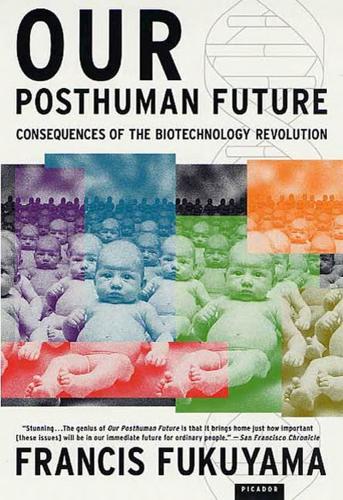
Our Posthuman Future: Consequences of the Biotechnology Revolution
by
Francis Fukuyama
Published 1 Jan 2002
See human race positive-sum relationships positivistic approach to rights posthuman history Postrel, Virginia preimplantation diagnosis and screening of embryos prejudice primates privacy, of genetic information progressive intellectuals, and the nature-nurture controversy property, desire for proteins proteomics Protestant churches Prozac “pseudoscience,” accusation of psychometry psychotropic drugs medical vs. cosmetic uses of political implications of psychological effects of regulation of side effects of and social control tailoring of used on children race, and intelligence racism accusation of Raelians rational agents Rawls, John Reagan administration reason and the rational ordering of priorities as source of human dignity recessive traits reciprocity recognition, human need and demand for recombinant DNA (rDNA) Recombinant DNA Advisory Committee (RAC) red lines, drawing of reductionism explanation of human nature by regulation (generally) different types of governmental hostility toward inefficiency of national vs. international scope of self- (by an industry) successful in U.S. regulation of biotechnology debate about international consensus on, possible need for new institutions needed for presently regulatory bodies “capture” of Reimer, David religion in Asia concerns about biotechnology vs. science as source of rights traditional, belief in rendering of animal products replacement birth rate reproduction natural “right” of reproductive technology future of religious opposition to Republican Party retirement age mandatory retraining of workers Ridley, Matt Rifkin, Jeremy Right, the beliefs of debates with the Left rights debates about vs. interests limitations on necessity of new types of shared language of sources from which derived See also human rights; natural rights risk-aversion Ritalin Robertson, John robots Roe v.
…
Many scientists and researchers would say that we don’t need to worry about fencing off human nature, however defined, from biotechnology, because we are a very long way from being able to modify it, and may never achieve the capability. They may be right: human germ-line engineering and the use of recombinant DNA technology on humans is probably much further off than many people assume, though human cloning is not. But our ability to manipulate human behavior is not dependent on the development of genetic engineering. Virtually everything we can anticipate being able to do through genetic engineering we will most likely be able to do much sooner through neuropharmacology.
…
This is true in international standards setting, coordination of airline traffic routes and payments, product testing, and bank settlements and was at one time true for food safety and medical experimentation. But it is not true of present-day biotechnology, or of the kinds of biomedical technologies that are likely to appear in the future. While the community of research scientists has in the past done an admirable job in policing itself in such areas as human experimentation and the safety of recombinant DNA technology, there are now too many commercial interests chasing too much money for self-regulation to continue to work well into the future. Most biotechnology companies will simply not have the incentives to observe many of the fine ethical distinctions that need to be made, which means that governments necessarily have to step in to draw up and enforce rules for them.
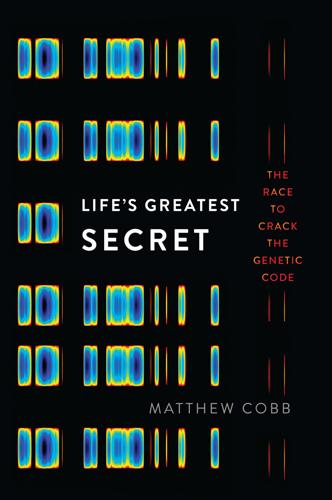
Life's Greatest Secret: The Race to Crack the Genetic Code
by
Matthew Cobb
Published 6 Jul 2015
However, a great deal of further work will be needed before this approach can be applied in the real world, and I suspect few scientists – or readers – would want to rely solely on this technique to ensure biosecurity.52 These responsible approaches to the potential impact of a new technique of unprecedented power are a direct descendant of the Asilomar conference on recombinant DNA that so successfully guided science as it was catapulted into the new world of genetic manipulation. In 2008, Paul Berg reflected on the impact of the Asilomar conference: In the 33 years since Asilomar, researchers around the world have carried out countless experiments with recombinant DNA without reported incident. Many of these experiments were inconceivable in 1975, yet as far as we know, none has been a hazard to public health. Moreover, the fear among scientists that artificially moving DNA among species would have profound effects on natural processes has substantially disappeared with the discovery that such exchanges occur in nature. … That said, there is a lesson in Asilomar for all of science: the best way to respond to concerns created by emerging knowledge or early-stage technologies is for scientists from publicly-funded institutions to find common cause with the wider public about the best way to regulate – as early as possible.
…
Berg, P. and Singer, M., George Beadle, an Uncommon Farmer: The Emergence of Genetics in the Twentieth Century, Cold Spring Harbor, Cold Spring Harbor Laboratory Press, 2003. Berg, P., Baltimore, D., Boyer, H. W. et al., ‘Potential biohazards of recombinant DNA molecules’, Science, vol. 185, 1974, p. 303. Berg, P., Baltimore, D., Brenner, S. et al., ‘Asilomar conference on recombinant DNA molecules’, Science, vol. 188, 1975, pp. 991–4. Berget, S. M., Moore, C. and Sharp, P. A., ‘Spliced segments at the 5′ terminus of adenovirus 2 late mRNA’, Proceedings of the National Academy of Sciences USA, vol. 74, 1977, pp. 3171–5.
…
If the population being studied contained variability for the length of DNA between the two sites where the restriction enzymes acted, then those variants could be detected on an electrophoresis gel. This was first demonstrated in 1980 by David Botstein and his colleagues, who were working on the human genetic disorder Huntington’s disease.38 Outside of medicine, the use of restriction enzymes proved invaluable for mapping genes and for the development of recombinant DNA biotechnology. All around the world, DNA fingerprinting is now routinely employed by the judicial system to convict criminals and to prove the innocence of the wrongly accused. The routine collection of DNA samples by the police, and the existence of databases permitting the identification of individuals, has led to a continuing ethical debate of the conflict between liberty and justice, with state forces arguing that only the guilty have something to hide, whereas more libertarian arguments underline the potential dangers.
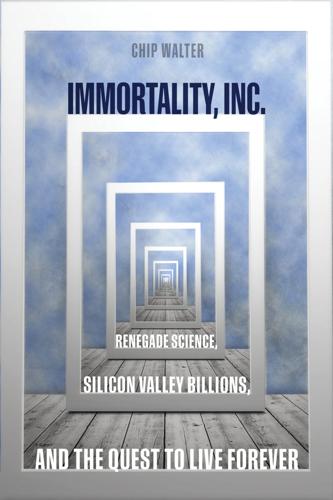
Immortality, Inc.
by
Chip Walter
Published 7 Jan 2020
But inside the fabled worlds of Silicon Valley and the pharmaceutical industry, otherwise known as Big Pharma, everyone knew precisely who he was. Genentech was up there in the pantheon of Silicon Valley companies with Hewlett-Packard and Intel. It was founded after Herb Boyer, Stanley Cohen, and Paul Berg co-invented recombinant DNA, among the truly epic pharmaceutical advances of the 20th century. Boyer then went on to co-create the company in 1976 after an out-of-work venture capitalist named Bob Swanson contacted him. The founding revolutionized medicine. Later, Boyer hired Levinson as a bench scientist, back when he was a bright postdoctoral student at the University of California at San Francisco.
…
That discovery revolutionized the biological and pharmaceutical worlds, creating not only a new field—biotechnology—but also an entirely new form of evolution: one driven by human technology, not the ancient and random interactions of natural selection. Until that time, hormones like insulin had to be painstakingly drawn from other animals like pigs, not a simple or cheap process. Now they could be created artificially, and in huge amounts. It was a remarkable innovation. If not for the advance of recombinant DNA, thousands of drugs that billions of people today take to help control their diabetes, cancer, Parkinson’s, or arthritis would be nothing more than a wispy dream. When Boyer hired Levinson to join the small but growing ranks of Genentech’s other bench scientists, his job was to see what secrets he could pry out of life’s genetic riddles.
…
The gene incompatibility expression problem was indeed thorny, and had been frustrating Genentech researchers for some time. It was related to hepatitis B, a disease that afflicted billions of people. Over time it destroyed their livers, and eventually, the rest of their bodies. An effective vaccine, if it could be created, would save millions of lives. Genentech was struggling to use recombinant DNA to create large batches of hep B vaccine, something that would deliver a major breakthrough in the treatment. The standard approach for growing a protein in 1980 was to use Boyer and Cohen’s approach: Insert it into the E. coli bacteria, and then place it in large fermenters where the bacteria would create millions more copies of the desired protein.

Safe Food: The Politics of Food Safety
by
Marion Nestle
Published 1 Jan 2010
Bureau of National Affairs, No. 221, November 15, 2000, at http://online.sfsu.edu/~rone/GEessays/PopeGMO.htm. 9. Genetically modified food: food for thought. Economist, June 19, 1999: 19–21. 10. Frederickson DS. The Recombinant DNA Controversy: A Memoir: Science, Politics, and the Public Interest 1974–1981. Washington, DC: American Society for Microbiology, 2001. For another view, see: Krimsky S. Genetic Alchemy: The Social History of the Recombinant DNA Controversy. Cambridge, MA: MIT Press, 1994. 11. Commoner B. Unraveling the DNA myth: the spurious foundation of genetic engineering. Harper’s, February 2002:39–47. 12. Fuchs RL, Astwood JD.
…
The response is no if one focuses on the similarities: DNA is DNA no matter where it comes from. The response is yes if one focuses on differences or the societal implications of the technology. Points of view govern such responses and lead to political controversy. Golden Rice: The Science Plant bioengineering is accomplished through recombinant DNA technology, through which the DNA segments that comprise a desirable gene from bacteria, for example, are inserted (recombined) permanently into the DNA of an entirely different organism—in this case, a plant. Scientists using recombinant techniques have created insect- and herbicide-resistant crops by taking genes from bacteria and transferring them to corn and soybeans.
…
HEALTH CONCERNS When scientists first discovered how to move genes from one organism to another, they wondered whether such manipulations could be harmful to health or to the environment. In 1975, researchers met in Asilomar, California, to review the potential hazards of genetic manipulations. To prevent unanticipated problems that might emerge from the new recombinant DNA techniques, they proposed stringent research guidelines. The National Institutes of Health (NIH) soon required recipients of its research grants to follow such guidelines. In an extreme example of caution, residents of Cambridge, Massachusetts, debated whether such experiments should be allowed within the city limits.
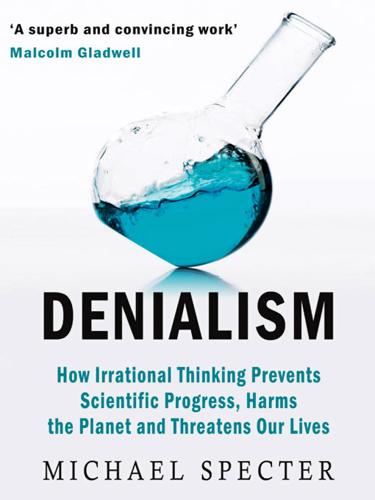
Denialism: How Irrational Thinking Hinders Scientific Progress, Harms the Planet, and Threatens Our Lives
by
Michael Specter
Published 14 Apr 2009
Looking back nearly thirty years later, one of the conference’s organizers, the Nobel laureate Paul Berg, wrote that “this unique conference marked the beginning of an exceptional era for science and for the public discussion of science policy. Its success permitted the then contentious technology of recombinant DNA to emerge and flourish. Now the use of the recombinant DNA technology dominates research in biology. It has altered both the way questions are formulated and the way solutions are sought.” Scientists at the meeting understood what was at stake. “We can outdo evolution,” said David Baltimore, genuinely awed by this new power to explore the vocabulary of life.
…
In 1953, James Watson and Francis Crick began to make it possible to understand why, by explaining how DNA arranges itself. The language of just four chemical letters—adenine, guanine, cytosine, and thymine—comes in the form of enormous chains of nucleotides. When joined together, the arrangement of their sequences determine how each human differs from each other and from all other living beings. By the 1970s, recombinant DNA technology permitted scientists to cut long, unwieldy molecules of nucleotides into digestible sentences of genetic letters and paste them into other cells. Researchers could suddenly combine the genes of two creatures that would never have been able to mate in nature. In 1975, concerned about the risks of this new technology, scientists from around the world convened a conference in Asilomar, California.
…
The scientific roots of synthetic biology are explored in Philip J. Pauly’s book Controlling Life: Jacques Loeb and the Engineering Ideal in Biology (Oxford University Press, 1987). It’s expensive and hard to find; but it is out there. I would also recommend Michael Rogers’s book about the early days of recombinant DNA technology, Biohazard (Knopf, 1979). That, too, is difficult to find. For anyone inclined to wonder why Eckard Wimmer created a synthetic polio virus, I suggest reading his 2006 article on the implications of the research, published in the Journal of the European Molecular Biology Organization, “The Test-Tube Synthesis of a Chemical Called Poliovirus.”

The End of Doom: Environmental Renewal in the Twenty-First Century
by
Ronald Bailey
Published 20 Jul 2015
“There’s no real consensus”: Doug Gurian-Sherman, “Are GMOs Worth the Trouble?” MIT Technology Review, March 27, 2014. www.technologyreview.com/view/525931/are-gmos-worth-the-trouble/. a worldwide moratorium: Paul Berg et al., “Potential Biohazards of Recombinant DNA Molecules.” Letter to the Editor, Science 185.4148 (July 16, 1974): 303. “In the case of recombinant DNA”: Liebe Cavalieri, “New Strains of Life—or Death.” New York Times Magazine, August 22, 1976, 67. “We want to be damned”: Alfred Vellucci, cited in John Kifner, “‘Creation of Life’ Experiment at Harvard Stirs Heated Debate.” New York Times, June 17, 1976, 1.
…
This new capability made some researchers uncomfortable, so a committee of prominent molecular biologists published a letter in the journal Science in July 1974 asking for a worldwide moratorium on certain types of gene-splicing experiments. The moratorium was supposed to last until the hazards that might be posed by gene splicing could be assessed. The researchers also asked that the National Institutes of Health devise a set of safety procedures for working with recombinant DNA. This was the first self-imposed ban on basic research in the history of science and it lasted two years. Naturally, the moratorium attracted the attention of a wide variety of activists, many of whom worried about researchers playing God with nature. Some warned that super-plagues would escape the laboratories.
…
In 1976, The New York Times Magazine published an alarming front-page article, “New Strains of Life—or Death,” by Cornell University biochemist Liebe Cavalieri. Cavalieri asserted, among other horrors, that gene splicing could lead to accidental outbreaks of infectious cancer. “In the case of recombinant DNA, it is an all or none situation—only one accident is needed to endanger the future of mankind,” he warned. Also in 1976, Alfred Vellucci, the mayor of Cambridge, Massachusetts, guided by the left-leaning group Science for the People, wanted to ban gene-splicing research in his city. Of course, Cambridge is home to Harvard University and the Massachusetts Institute of Technology.

Human Compatible: Artificial Intelligence and the Problem of Control
by
Stuart Russell
Published 7 Oct 2019
See human preferences preference utilitarianism, 220 Price, Richard, 54 pride, 230–31 Primitive Expounder, 133 prisoner’s dilemma, 30–31 privacy, 70–71 probability theory, 21–22, 273–84 Bayesian networks and, 275–77 first-order probabilistic languages, 277–80 independence and, 274 keeping track of not directly observable phenomena, 280–84 probabilistic programming, 54–55, 84, 279–80 programming language, 34 programs, 33 prohibitions, 202–3 Project Aristo, 80 Prolog, 271 proofs for beneficial AI assistance games, 184–210, 192–203 learning preferences from behavior, 190–92 mathematical guarantees, 185–90 recursive self-improvement and, 208–10 requests and instructions, interpretation of, 203–5 wireheading problem and, 205–8 propositional logic, 51, 268–70 Putin, Vladimir, 182, 183 “put it in a box” argument, 161–63 puzzles, 45 quantum computation, 35–36 qubit devices, 35–36 randomized strategy, 29 rationality Aristotle’s formulation of, 20–21 Bayesian, 54 critiques of, 24–26 expected value rule and, 22–23 gambling and, 21–23 game theory and, 28–32 inconsistency in human preferences, and developing theory of beneficial AI, 26–27 logic and, 39–40 monotonicity and, 24 Nash equilibrium and, 30–31 preferences and, 23–27 probability and, 21–22 randomized strategy and, 29 for single agent, 20–27 transitivity and, 23–24 for two agents, 27–32 uncertainty and, 21 utility theory and, 22–26 rational metareasoning, 262 reading capabilities, 74–75 real-world decision problem complexity and, 39 Reasons and Persons (Parfit), 225 Recombinant DNA Advisory Committee, 155 recombinant DNA research, 155–56 recursive self-improvement, 208–10 redlining, 128 reflex agents, 57–59 reinforcement learning, 17, 47, 55–57, 105, 190–91 remembering self, and preferences, 238–40 Repugnant Conclusion, 225 reputation systems, 108–9 “research can’t be controlled” arguments, 154–56 retail cashiers, 117–18 reward function, 53–54, 55 reward system, 17 Rise of the Robots: Technology and the Threat of a Jobless Future (Ford), 113 risk posed by AI, 145–70 deflection arguments, 154–59 denial of problem, 146–54 Robinson, Alan, 5 Rochester, Nathaniel, 4–5 Rutherford, Ernest, 7, 77, 85–86, 150 Sachs, Jeffrey, 230 sadism, 228–29 Salomons, Anna, 116 Samuel, Arthur, 5, 10, 55, 261 Sargent, Tom, 191 scalable autonomous weapons, 112 Schwab, Klaus, 117 Second Machine Age, The (Brynjolfsson & McAfee), 117 Sedol, Lee, 6, 47, 90, 91, 261 seismic monitoring system (NET-VISA), 279–80 self-driving cars, 65–67, 181–82, 247 performance requirements for, 65–66 potential benefits of, 66–67 probabilistic programming and, 281–82 sensing on global scale, 75 sets, 33 Shakey project, 52 Shannon, Claude, 4–5, 62 Shiller, Robert, 117 side-channel attacks, 187, 188 Sidgwick, Henry, 224–25 silence regarding risks of AI, 158–59 Simon, Herbert, 76, 86, 265 simulated evolution of programs, 171 SLAM (simultaneous localization and mapping), 283 Slate Star Codex blog, 146, 169–70 Slaughterbot, 111 Small World (Lodge), 1 Smart, R.
…
In the same vein, a discussion of the risks of containment failure in nuclear plants should be interpreted not as an attempt to ban nuclear physics research but as a suggestion to focus more effort on solving the containment problem. There is, as it happens, a very interesting historical precedent for cutting off research. In the early 1970s, biologists began to be concerned that novel recombinant DNA methods—splicing genes from one organism into another—might create substantial risks for human health and the global ecosystem. Two meetings at Asilomar in California in 1973 and 1975 led first to a moratorium on such experiments and then to detailed biosafety guidelines consonant with the risks posed by any proposed experiment.15 Some classes of experiments, such as those involving toxin genes, were deemed too hazardous to be allowed.
…
Two meetings at Asilomar in California in 1973 and 1975 led first to a moratorium on such experiments and then to detailed biosafety guidelines consonant with the risks posed by any proposed experiment.15 Some classes of experiments, such as those involving toxin genes, were deemed too hazardous to be allowed. Immediately after the 1975 meeting, the National Institutes of Health (NIH), which funds virtually all basic medical research in the United States, began the process of setting up the Recombinant DNA Advisory Committee. The RAC, as it is known, was instrumental in developing the NIH guidelines that essentially implemented the Asilomar recommendations. Since 2000, those guidelines have included a ban on funding approval for any protocol involving human germline alteration—the modification of the human genome in ways that can be inherited by subsequent generations.

The Power Law: Venture Capital and the Making of the New Future
by
Sebastian Mallaby
Published 1 Feb 2022
he told Perkins.[75] Perkins remained unconvinced, but Swanson put together a list of scientists with expertise in the technology. He cold-called all of them. In each conversation, he heard the same message: recombinant DNA had a commercial future, to be sure, but it was a distant one—probably decades away. Then Swanson called Herbert Boyer of the University of California, San Francisco, not fully realizing that Boyer was the co-inventor of the DNA technology. Swanson launched into his standard pitch: recombinant DNA held such promise; surely it could be commercialized in the near future! To his amazement, Boyer responded that he was probably right.[76] Swanson immediately asked if he could come over.
…
He had a laid-back style, shaggy curls, a thick mustache, and the build of a high school football player. Swanson had no inkling that Boyer had been pondering the commercial applications for recombinant DNA for months, ever since he had thought his sick son might need a scarce growth hormone.[78] But to Swanson’s delight, Boyer reiterated that commercial applications might be just years away—not decades. The men chatted in the laboratory—the square 1950s puppy and the shaggy 1970s cool cat—and soon Swanson’s enthusiasm for the world-changing potential of recombinant DNA created an unexpected bond between them. Boyer took Swanson to a bar, and after three hours they concluded that they should work together.[79] Boyer knew science; Swanson knew business.
…
He was soon kicked off the payroll.[72] This forced Swanson to think afresh about his direction. He knocked on the doors of the big Silicon Valley electronics firms, but his lack of operational and engineering experience made him an unattractive prospect.[73] Yet he did have an idea. As an associate at KP, he had attended a lunch talk featuring a mention of a technology called recombinant DNA. It was a passing reference, and it failed to register with the others at the table. Now that he found himself jobless, Swanson resolved to discover more about it.[74] For weeks, Swanson read everything he could find on this new frontier in biology. Kleiner and Perkins had allowed him to keep coming to the office, even though he was no longer being paid, and when Swanson ran into Perkins one day, he told him of his new obsession.
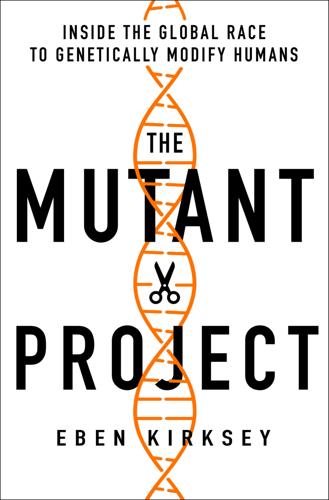
The Mutant Project: Inside the Global Race to Genetically Modify Humans
by
Eben Kirksey
Published 10 Nov 2020
Richard Whitley, the acting committee chairman, called the proceedings to order: “We have been at this now for forty years, and it is our responsibility to continually update the guidelines to make sure that they are contemporary with current procedures. Today is a landmark.” It was June 21, 2016, and the committee would decide if CRISPR should be ushered into the clinic. Formed in 1975, the Recombinant DNA Advisory Committee (RAC, pronounced “rack”) had a venerable history. Early on, scientific experts addressed concerns about ecological, health, and safety issues related to all genetically engineered organisms. Over the years, the RAC’s mission narrowed. Scrutiny of modified microbes, plants, and animals was no longer part of the committee’s mandate.
…
The man becomes a suicide bomber, targeting the headquarters of the insurance company that denied his child access to a very expensive—and potentially lifesaving—experimental cancer treatment.9 As medical inequality intensifies with the biotechnology innovation economy, patients and parents are becoming increasingly desperate. 8 THE CANCER MOONSHOT Carl June—the scientist who was questioned about social inequality, ethics, and scientific profiteering by the Recombinant DNA Advisory Committee—passes as white, though in an earlier era he might have been excluded from science by the one-drop rule. His great-great-grandmother was black. When we talked I noted that the Cancer Survivor Hall of Fame was an uncomfortably white space. “The recruitment thing is a very complex issue,” June said.
…
See coronavirus pandemic Crick, Francis (geneticist) DNA research of Nobel Prize awarded to crip (crippled) Crips in Space supercrips See also ableism; disability CRISPR approval of first clinical trial (June 2016) CRISPR-Cas9 discovery of “editing” metaphor and ethics and first edited babies (Lulu and Nana, October 2018) first edited human embryo (April 2015) function of how-to guide human reproduction and limited effectiveness in adults military uses of mutations and off-target genetic damage power of price of profit-driven experiments unpredictability of See also Charpentier, Emmanuelle; Church, George; Doudna, Jennifer; He, Jiankui; Huang, Junjiu; ICSI; in vitro fertilization CRISPR Sperm Bank (artwork) CRISPR Therapeutics cryptocurrency “Cyborg Manifesto” (Haraway) cystic fibrosis Daisy, Mike (storyteller) Daley, George (molecular biologist) Darnovsky, Marcy (policy advocate) Darwin, Charles (biologist) Davis, Machiavelli (biohacker) Deem, Michael (physicist and bioengineer) co-author of Nature manuscript CRISPR experiment involvement mentor to Jiankui He not charged with crime Defense Advanced Research Projects Agency (DARPA) Deng, Xiaoping (paramount leader, People’s Republic of China, 1982–1987) Derrida, Jacques (philosopher) de Vries, Hugo (biologist) Dialectic of Sex, The (Firestone) Dikötter, Frank (historian) Direct Genomics (Jiankui He start-up) disability abortion and enhancement and euthanasia and X-Men and See also ableism; crip; Down Syndrome disability rights Disability Visibility Project Discourse of Race in Modern China, The (Dikötter) diversity biodiversity CRISPR and disability and genetic testing and human neurodiversity science and sexual DNA building block of life databases GenBank history of discovery as a language mutations to police use of Recombinant DNA Advisory Committee (RAC) See also genes; gene therapy; genetic testing; sequencing genes DNA Dreams (documentary) Doctorow, Cory (science fiction author) Dolezal, Rachel (former NAACP chapter president) double-stranded break (in DNA), described. See also CRISPR; zinc fingers Doudna, Jennifer (biochemist) CCR5 research discovery of CRISPR gene editing encounters with Jiankui He Down syndrome drug pricing for AZT for HIV medicine by Novartis by Sangamo Therapeutics Editas Medicine Edwards, Robert (physiologist) enhancement He, Jiankui, on See also eugenics; genes; genotype Epstein, Steven (sociologist) Ethereum (cryptocurrency) ethics animal welfare and art and China and Christian values commercial enterprises and cyborg disability and environmental genetic engineering and of He, Jiankui human dignity and human enhancement and human subjects and imagination and justice and misconduct mutant queer regulation of relational reproductive medicine and shock art and technology and See also ableism; activists; conflicts of interest; informed consent eugenics (good genes) Cold Spring Harbor Laboratory disabled people and genetic testing and HIV and immigrants and military and Nazis and sterilization and Watson, James and yousheng (“high-quality birth”) See also disability; queer; race Eugenics Record Office euthanasia experimental volunteers Anne (pseudonym, Dr.

Robot Rules: Regulating Artificial Intelligence
by
Jacob Turner
Published 29 Oct 2018
Both of these topics are too narrow to qualify as general ethical codes and therefore are not discussed further here. 77“CERNA Éthique de la recherche en robotique”: First Report of CERNA, CERNA, 34–35, http://cerna-ethics-allistene.org/digitalAssets/38/38704_Avis_robotique_livret.pdf, accessed 1 June 2018. 78The term “Recombinant” refers to the practice of attaching DNA from one organism to DNA of another, with the potential for creating organisms displaying traits from these multiple sources. See Paul Berg, “Asilomar and Recombinant DNA”, Official Website of the Nobel Prize, https://www.nobelprize.org/nobel_prizes/chemistry/laureates/1980/berg-article.html, accessed 1 June 2018. 79Paul Berg, David Baltimore, Sydney Brenner, Richard O. Roblin III, and Maxine F. Singer. “Summary Statement of the Asilomar Conference on Recombinant DNA Molecules”, Proceedings of the National Academy of Sciences Vol. 72, No. 6 (June 1975), 1981–1984, 1981. 80Paul Berg, “Asilomar and Recombinant DNA”, Official Website of the Nobel Prize, https://www.nobelprize.org/nobel_prizes/chemistry/laureates/1980/berg-article.html, accessed 1 June 2018. 81“A principled AI Discussion in Asilomar”, Future of Life Institute, 17 January 2017, https://futureoflife.org/2017/01/17/principled-ai-discussion-asilomar/, accessed 1 June 2018. 8290% approval from participants was required in order for a principle to be adopted in the final set. 83“Asilomar AI Principles”, Future of Life Institute, https://futureoflife.org/ai-principles/, accessed 1 June 2018. 84Jeffrey Ding, “Deciphering China’s AI Dream”, Governance of AI Program, Future of Humanity Institute (Oxford: Future of Humanity Institute, March 2018), 30, https://www.fhi.ox.ac.uk/wp-content/uploads/Deciphering_Chinas_AI-Dream.pdf, accessed 1 June 2018. 85Anonymous comment made in discussion with the author, January 2018.
…
This limited and modest approach is helpful, in that it seeks to identify potential problems first before charging headlong into an attempt at laying down definitive commands. 4.4 Asilomar 2017 Principles In 1975, leading DNA researcher Paul Berg convened a conference at Asilomar Beach, California, on the dangers and potential regulation of Recombinant DNA technology.78 Around 140 people participated, including biologists, lawyers and doctors. The participants agreed principles for research, recommendations for the technology’s future use, and made declarations concerning prohibited experiments.79 The Asilomar 1975 Conference later came to be seen as a seminal moment not just in the regulation of DNA technology but also the public engagement with science.80 In January 2017, another conference was convened at Asilomar by the Future of Life Institute, a think tank which focusses on “Beneficial AI”.
…
Necessarily, if an ethical code is to have any effect it will mean that certain practices are controlled or prohibited. The question then is whether this is a worthwhile trade-off. Constraints are already accepted in other areas of scientific research. Many of the proposals made at the Asilomar 1975 Conference on recombinant DNA research have been adopted as either a matter of law or professional practice.144 In many countries, certain types of experiments on human and animals are prohibited or at least require special licenses. Arguably, all of these constraints stand in the way of scientific progress, but that is a moral balance which society is willing to strike.
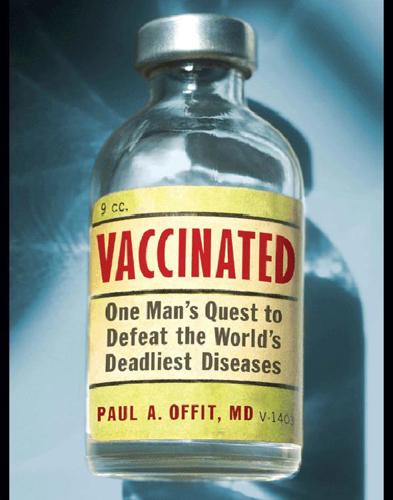
Vaccinated: One Man's Quest to Defeat the World's Deadliest Diseases
by
Paul A. Offit
Published 1 Jan 2007
Boyer and Cohen reasoned that any gene, even human genes, could be inserted into bacterial plasmids. Every time these genetically engineered bacteria reproduced and made their own proteins, they would also be making human proteins; bacteria could become tiny factories that mass-produced a wide variety of human products. The new field of research launched by Boyer and Cohen was called recombinant DNA technology, or genetic engineering. The value of this invention wasn’t lost on a venture capitalist named Robert Swanson, who called Boyer and asked to meet him in a San Francisco bar. There, the twenty-nine-year-old Swanson and forty-year-old Boyer drank beer and discussed the commercial value of synthesizing human proteins in a laboratory.
…
Boyer and Cohen: "Biotechnology at 25: The Founders," http://bancroft. berkeley.Edu/Exhibits/Biotech/25.html; "Robert Swanson and Herbert Boyer: Giving Birth to Biotech," BusinessWeek Online, http://www.businessweek. com/magazine/content/04_42/b3904017_mz072.htm; "A Historical Timeline: Cracking the Code of Life," http://www.jgi.doe.gov/education/timeline_3.html; "Who Made America?: Herbert Boyer: Biotechnology," http://www. pbs.org/wgbh/theymadeamerica/whomade/boyer_hi.html; 1973, "Herbert Boyer (1936–) and Stanley Cohen (1936–) Develop Recombinant DNA Technology, Showing That Genetically Engineered DNA Molecules May Be Cloned in Foreign Cells," Genome News Network, http://www.genomenews network.org/resources/timeline/1973_Boyer.php; "Shaping Life in the Lab: The Boom in Genetic Engineering," Time, March 9, 1981; "Herbert Boyer (1936–)," http://www.accessexcellence.org/RC/AB/BC/Herbert_ Boyer.html; "The Birth of Biotech," Technology Review.com; http://www.technology review.com/articles/00/07/trailing0700.asp; "Stanley Cohen and Herbert Boyer," http://www.nobel-prize-winners.com/cohen/cohen.html; "Herbert W.
…
Luke’s Hospital Presidential Medal of Freedom Price, Winston Prince, Alfred prions prison, measles vaccine development at protein polymorphisms Provost, Phil Public Health Research Institute Quaker Oats Company rabbits, in vaccine development rabies Radetsky, Peter radioactive cereal Ramon, Gaston range paralysis Ratzinger, Cardinal Joseph (Pope Benedict Reagan, Ronald recombinant DNA technology Reid, Duncan Reinke, Harrison retroviruses Rh factor Ricketts, Howard Taylor Ricketts, Myra Tubbs Rickettsia rickettsii, Rivera, Geraldo Robbins, Frederick Robert Koch Gold Medal Rockefeller Institute Rocky Mountain spotted fever Rolling Stone, Röntgen, Wilhelm Conrad Roosevelt, Eleanor rotavirus Rous, Peyton Roux, Emile Royal Free Hospital Royal Society of London rubella vaccine for Rubin, Harry Russert, Tim Rutter, William Sabin, Albert Salk, Donna Salk, Jonas Salk, Jonathan Salmonella typhi, Sanofi-Pasteur scallions Schriver, James W Schumacher, Jim Schwarz, Anton Schwarzenegger, Arnold Schweitzer, Albert Seal, John Seavers, Jennifer Shah, Keerti Shermer, Michael Shilts, Randy shingles Shope, Richard sickle cell disease simian immunodeficiency virus simian virus (SV40) Sinai Hospital 60 Minutes, Smadel, Joe Smith, Bessie Smith, Page South African gold miners spinal cord, in vaccine development, Spratt, John Srivastava, Pramod Stanford University Stanley, Wendell Starzl, Thomas Staub, Joan Staphylococcus aureus Steinbeck, John Stern, Howard St.
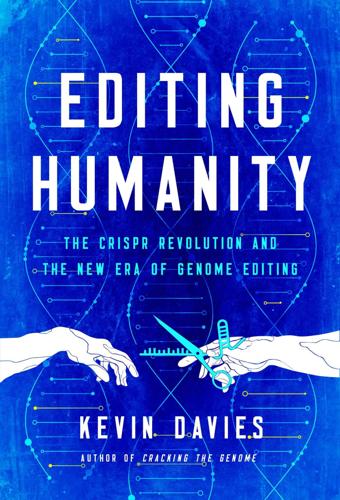
Editing Humanity: The CRISPR Revolution and the New Era of Genome Editing
by
Kevin Davies
Published 5 Oct 2020
Even his mother was surprised: when she heard the news on the car radio, she turned to her husband and said: “I didn’t know there was another Hamilton Smith at Hopkins.”10 Smith’s Nobel was awarded for his serendipitous discovery of restriction endonucleases, a large family of bacterial enzymes that recognize and cut specific DNA sequences or motifs. Genetic engineers turned these enzymes into the catalysts of the recombinant DNA revolution. “Everything about modern biology, from the idea of determining a DNA sequence to the idea of recombinant DNA to DNA fingerprinting, it all starts with restriction enzymes,” said geneticist David Botstein.11 By the mid-1990s, thousands of restriction enzymes had been catalogued, shipped commercially around the world in polystyrene buckets of dry ice.
…
We will surely come to the time when man will have the power to alter—specifically and consciously—his very genes. This will be a new event in the universe. The prospect is to me awesome in its potential for deliverance or equally, for disaster. Sinsheimer’s mesmerizing words envisioning a future of human genetic modification predated the recombinant DNA revolution and genetic engineering, let alone the invention of DNA sequencing and the Human Genome Project. How might we change our genes, he asked rhetorically? Might we “alter the uneasy balance of our emotions. Could we be less warlike, more self-confident, more serene?” After two billion years, he said, “this is, in a sense, the end of the beginning.”
…
Can we imagine that embryo editing reaches the stage where we can finesse the editing so there are no rearrangements, no off-target effects, no mosaicism? “We could get there quickly,” Urnov surmises. “But the $64,000 challenge is: What are we going to do?”2 We’ve been wrestling with this dilemma for decades, since before the recombinant DNA revolution. But there is a renewed urgency since the first reports of human embryo editing. Eric Lander addressed this issue head-on at the first international genome editing conference in 2015. In preimplantation genetic testing (PGT), we already have a method, he argued, to reduce the transmission of disease genes.

Deadly Choices: How the Anti-Vaccine Movement Threatens Us All
by
Paul A. Offit M.D.
Published 28 Dec 2010
Science was powerful but dangerous. Today’s fears of new technology are no different. When the human papillomavirus (HPV) vaccine was first made available in the United States in June 2006, anti-vaccine activists targeted it for elimination. This was in part a response to the relatively new method used to make it: recombinant DNA technology. To make HPV vaccine, researchers took the gene responsible for the surface protein of the virus, known as the L1 protein, inserted it into a small circular piece of DNA, known as a plasmid, and put the plasmid inside yeast cells (specifically, common baker’s yeast). When the yeast cells reproduced themselves, they also made large quantities of the HPV L1 protein, as instructed by the plasmid inside them.
…
Regarding the MMR vaccine, he wrote, “The measles and mumps vaccines are nourished for years in a culture of chicken embryo cells [that contain] human albumin, a protein filtered out of human blood units.” Sears is correct in stating that MMR is stabilized using human serum albumin. And he’s right in stating that it’s a blood protein. But the human albumin in MMR isn’t made from human blood; it’s made using recombinant DNA technology. Human blood is never part of the process. Sears’s misstatements are a far cry from claims that vaccines contain the blood of bats and toads—just not far enough. Pharmaceutical companies misrepresent data. Sears writes, “Twenty years ago a group of doctors from the CDC, several U.S. medical centers, and two pharmaceutical companies—Glaxo-SmithKline and Merck—undertook the task of determining just how common the hep[atitis] B infection was in infants and children.
…
See Herd (population) immunity Priest, Julian Prince, Sarah Prince v. Massachusetts Principia College Prions Protests, anti-vaccine Public Health Laboratory Public health officials, anti-vaccine movement and Quinn, Aidan Raggedy Ann doll Rallies, anti-vaccine Reagan, Ronald Recombinant DNA technology, HPV vaccine and Reiki Religious exemptions to vaccination requirements impact of Religulous (film) Renton, George Resciniti, Anthony (Tony) Resciniti, Leo Rescue Angels Rheumatoid arthritis, hepatitis B vaccine and Richmond, Julius Roberts, Robin Roizen, Michael Rome, Leonard Rorke-Adams, Lucy Rotavirus vaccine intussusception and Oz on testing vaccine program Royal College of Physicians Royal Society of Medicine Rubella, historic mortality rate Rubella vaccine.
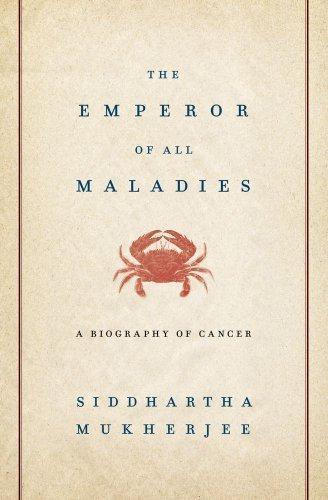
The Emperor of All Maladies: A Biography of Cancer
by
Siddhartha Mukherjee
Published 16 Nov 2010
In the late 1970s, researchers at Stanford and UCSF had invented a technology termed “recombinant DNA.” This technology allowed genes to be manipulated—engineered—in a hitherto unimaginable manner. Genes could be shuttled from one organism to another: a cow gene could be transferred into bacteria, or a human protein synthesized in dog cells. Genes could also be spliced together to create new genes, creating proteins never found in nature. Genentech imagined leveraging this technology of genes to develop a pharmacopoeia of novel drugs. Founded in 1976, the company licensed recombinant DNA technology from UCSF, raised a paltry $200,000 in venture funds, and launched its hunt for these novel drugs.
…
Insulin, for instance, was produced by grinding up cow and pig innards into a soup and then extracting the protein from the mix—one pound of insulin from every eight thousand pounds of pancreas. Growth hormone, used to treat a form of dwarfism, was extracted from pituitary glands dissected out of thousands of human cadavers. Clotting drugs to treat bleeding disorders came from liters of human blood. Recombinant DNA technology allowed Genentech to synthesize human proteins de novo: rather than extracting proteins from animal and human organs, Genentech could “engineer” a human gene into a bacterium, say, and use the bacterial cell as a bioreactor to produce vast quantities of that protein. The technology was transformative.
…
Now, as Genentech set out to invent new drugs from scratch, it was forced to change its winning strategy: it needed to find targets for drugs—proteins in cells that might play a critical role in the physiology of a disease that might, in turn, be turned on or off by other proteins produced using recombinant DNA. It was under the aegis of this “target discovery” program that Axel Ullrich, a German scientist working at Genentech, rediscovered Weinberg’s gene—Her-2/neu, the oncogene tethered to the cell membrane.* But having discovered the gene, Genentech did not know what to do with it. The drugs that Genentech had successfully synthesized thus far were designed to treat human diseases in which a protein or a signal was absent or low—insulin for diabetics, clotting factors for hemophiliacs, growth hormone for dwarfs.

The Nature of Technology
by
W. Brian Arthur
Published 6 Aug 2009
If a breakthrough is important it may become an enabling technology: a means to a purpose that promises significant commercial application or offers a key element for the construction of further elements. The technology that brought genetic engineering to life and transformed it from an offshoot of biology to a nascent field of technology was Stanley Cohen and Herbert Boyer’s development of recombinant DNA in 1973. Cohen had been researching plasmids, tiny circular units of DNA found in bacteria. And Boyer had been working on restriction enzymes—the “molecular scissors” that can cut DNA into shorter segments. Together the two developed a means to cut a gene from one organism (the frog Xenopus laevis in their early experiments) and paste it into a plasmid.
…
Together the two developed a means to cut a gene from one organism (the frog Xenopus laevis in their early experiments) and paste it into a plasmid. They could then insert the plasmid into an E. coli bacterium that could reproduce itself rapidly along with its foreign gene. The bacterium would then function as a miniature factory for manufacturing the foreign gene’s corresponding protein. Recombinant DNA was primitive at first, and controversial because of its potential to create nonnatural organisms. But controversial or not, it broke through two limitations that had been holding genetic technology back: the ability to pluck genes from one organism and place them in another within particular organisms, and the ability to manufacture proteins artificially for human purposes.

Palo Alto: A History of California, Capitalism, and the World
by
Malcolm Harris
Published 14 Feb 2023
A Stanford bureaucrat named Niels Reimers created the Office of Technology Licensing (OTL) in 1970, a decade ahead of the government’s official policy change.vi The OTL was operating in a gray area, especially in 1974, when it filed a patent for the recombinant DNA process along with the UCs on behalf of the scientists Herb Boyer and Stanley Cohen. Could you even patent DNA? A lot of scientists in the community said no, and they knew from firsthand experience that it took a lot more people than Boyer and Cohen to develop recombinant DNA. The U.S. Patent and Trademark Office demurred, but Boyer, along with a venture capitalist from Kleiner Perkins named Bob Swanson, saw a road to the market for biotech, and they formed a company in 1976 planning to license and use recombinant DNA. Following the day’s simple scrunching naming conventions, they called it Genentech.
…
Chakrabarty, which explicitly allowed people to patent synthetic organisms—privatizing life.19 With that promising indicator, Genentech hit the public markets in October, turning Herb Boyer into a multimillionaire when the share price doubled on the first day, even though the company didn’t have a product. In December, following the clarity established in Chakrabarty, the patent office approved the recombinant DNA application, and before the end of the year, Congress passed the Bayh-Dole Act. The Genentech model had a seal of approval from the government and Wall Street, if not necessarily from all the scientists involved. Like Walter Brattain and John Bardeen, the traditionalists could content themselves with prestige, while the scholar-entrepreneurs, such as Boyer, cashed in big.
…
At the end of the 1980s, after making many people in Palo Alto very rich, the company was majority-acquired by the Swiss multinational pharmaceuticals conglomerate Roche. By getting the government out of the way, the Bay Area’s capitalists and scientists turned a legally dubious piece of paper into a real company that made drugs that people used. It was their payout for rescuing recombinant DNA from the tragedy of the commons. Boosted by the OTL’s DNA IP, Stanford quickly became the top university in the country in terms of patent income.22 What the public gained or lost in the process is hard to calculate. It was an era of trade-offs, even for an institution like Stanford, which grew around finance capital like beans on a trellis, and the administration had to navigate between the opportunities opening up in the private sector and the reduction in public resources.

The New Geography of Jobs
by
Enrico Moretti
Published 21 May 2012
The probability that a woman will find exactly the man she is looking for—the one with the looks, interests, and values that she really wants—is higher in the larger site because there are more men to choose from. And of course the same is true for the men. Labor markets are very similar to dating sites. Thick labor markets are better at matching employers with workers, and the ultimate match is closer to the ideal match. If you are a molecular biologist who specializes in a particular branch of recombinant DNA technology, it is really important to find the one biotech firm that uses that specific technology. If you move to a city like Boston or San Diego, where many biotech firms are concentrated, you are more likely to find the firm that really wants—and will pay for—your unique skill set. If you move to a city like Portland or Chicago, where there are fewer biotech firms, you may have to settle for a less ideal match and therefore a lower salary.
…
This is a challenging question to answer, but one way is to look at how existing innovation clusters were created and see whether that process can be reproduced elsewhere. The history of the biotech industry is particularly enlightening. In the spring of 1973, Herbert Boyer and Stanley Cohen invented a recombinant DNA technique that changed the course of life science research forever. Almost immediately, dozens of private biotech labs appeared all over the United States—among other places, in Houston, Long Island, Cincinnati, Montgomery, Cambridge, Philadelphia, northern New Jersey, Miami, Palo Alto, Emeryville, Los Angeles, and La Jolla.

Our Final Invention: Artificial Intelligence and the End of the Human Era
by
James Barrat
Published 30 Sep 2013
Psychologically and commercially, the stage is set for a disaster. What can we do to prevent it? * * * Ray Kurzweil cites something called the Asilomar Guidelines as a precedent-setting example of how to deal with AGI. The Asilomar Guidelines came about some forty years ago when scientists first were confronted with the promise and peril of recombinant DNA—mixing the genetic information of different organisms and creating new life-forms. Researchers and the public feared “Frankenstein” pathogens that could escape labs through carelessness or sabotage. In 1975 scientists involved in DNA research halted lab work, and convened 140 biologists, lawyers, physicians, and press at the Asilomar Conference Center near Monterey, California.
…
LIDA (Learning Intelligent Distributed Agent) Lifeboat Foundation Lipson, Hod Loebner, Hugh Lynn, William J., III Machine Intelligence Research Institute (MIRI) Singularity Summit machine learning Madoff, Bernie malware Mazzafro, Joe McCarthy, John McGurk, Sean military battlefield robots and drones DARPA, see DARPA energy infrastructure and nuclear weapons, see nuclear weapons Mind Children (Moravec) Minsky, Marvin Mitchell, Tom mobile phones see also iPhone Monster Cat Moore, Gordon Moore’s Law morality see also Friendly AI Moravec, Hans Moravec’s Paradox mortality, see immortality mortgage crisis Mutually Assured Destruction (MAD) nano assemblers nanotechnology “gray goo” problem and natural language processing (NLP) natural selection Nekomata (Monster Cat) NELL (Never-Ending-Language-Learning system) neural networks neurons New Scientist New York Times Newman, Max Newton, Isaac Ng, Andrew 9/11 attacks Normal Accidents: Living with High-Risk Technologies (Perrow) normalcy bias North Korea Norvig, Peter Novamente nuclear fission nuclear power plant disasters nuclear weapons of Iran Numenta Ohana, Steve Olympic Games (cyberwar campaign) Omohundro, Stephen OpenCog Otellini, Paul Page, Larry paper clip maximizer scenario parallel processing pattern recognition Pendleton, Leslie Perceptron Perrow, Charles Piaget, Jean power grid Precautionary Principle programming bad evolutionary genetic ordinary self-improving, see self-improvement Rackspace rational agent theory of economics recombinant DNA Reflections on Artificial Intelligence (Whitby) resource acquisition risks of artificial intelligence apoptotic systems and Asilomar Guidelines and Busy Child scenario and, see Busy Child scenario defenses against lack of dialogue about malicious AI Precautionary Principle and runaway AI Safe-AI Scaffolding Approach and Stuxnet and unintended consequences robots, robotics Asimov’s Three Laws of in dangerous and service jobs in sportswriting Rosenblatt, Frank Rowling, J.
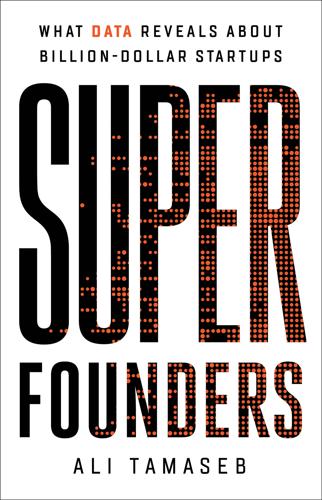
Super Founders: What Data Reveals About Billion-Dollar Startups
by
Ali Tamaseb
Published 14 Sep 2021
Before Robert Swanson launched the company, he was working as an associate at the recently formed venture capital firm Kleiner Perkins, where he learned about recombinant DNA technology through an investment the firm had made. After Swanson was let go, he remained fascinated by the idea. Now unemployed, he started cold-calling scientists working on the technology. One of them, Herbert Boyer, a professor at University of California, San Francisco, would end up becoming his co-founder. Boyer, a pioneer in the field of recombinant DNA, agreed to commercialize the technology. Genentech kick-started the modern biotech industry, was the first company to produce synthetic insulin for diabetic patients, and later invented many of the critical drugs patients use today.6 Genentech eventually amassed massive shareholder value and was acquired for $47 billion in 2009.

The Singularity Is Nearer: When We Merge with AI
by
Ray Kurzweil
Published 25 Jun 2024
No one would have preexisting immunity, and the result would be a pandemic capable of ravaging the human population.[26] The 2019–2023 coronavirus pandemic offers us a pale glimpse of what such a catastrophe could be like. The specter of this possibility was the impetus for the original Asilomar Conference on Recombinant DNA in 1975, fifteen years before the Human Genome Project was initiated.[27] It drew up a set of standards to prevent accidental problems and to guard against intentional ones. These “Asilomar guidelines” have been continually updated, and some of their principles are now baked into legal regulations governing the biotechnology industry.[28] There have also been efforts to create a rapid response system to counteract a suddenly emerging biological virus, whether released accidentally or intentionally.[29] Before COVID-19, perhaps the most notable effort to improve epidemic reaction times was the US government’s June 2015 establishment of the Global Rapid Response Team at the Centers for Disease Control.
…
Daniel Bressler and Chris Bakerlee, “ ‘Designer Bugs’: How the Next Pandemic Might Come from a Lab,” Vox, December 6, 2018, https://www.vox.com/future-perfect/2018/12/6/18127430/superbugs-biotech-pathogens-biorisk-pandemic. BACK TO NOTE REFERENCE 26 For a more in-depth case study on the Asilomar Conference and the principles it produced, see M. J. Peterson, “Asilomar Conference on Laboratory Precautions When Conducting Recombinant DNA Research—Case Summary,” International Dimensions of Ethics Education in Science and Engineering Case Study Series, June 2010, https://scholarworks.umass.edu/cgi/viewcontent.cgi?article=1023&context=edethicsinscience. BACK TO NOTE REFERENCE 27 Alan McHughen and Stuart Smyth, “US Regulatory System for Genetically Modified [Genetically Modified Organism (GMO), rDNA or Transgenic] Crop Cultivars,” Plant Biotechnology Journal 6, no. 1 (January 2008): 2–12, https://doi.org/10.1111/j.1467-7652.2007.00300.x.
…
See superintelligent AI symbolic computing, 14–19, 40 thought-to-text technology, 70–71 3D printing, 184 Turing test, 8–9, 12–13, 63–69 use of term, 13 vertical agriculture, 181–83 Asia, poverty, 138, 141 Asilomar Conference on Beneficial AI, 280, 282–83 Asilomar Conference on Recombinant DNA, 271–72 ASIMO, 101 Askell, Amanda, 48 assembly lines, 203, 204 associative memories, 38 asteroids, 34 Atari, 42 atherosclerosis, 134, 262 Atlas (robot), 101 ATMs, 209 atomic weapons.
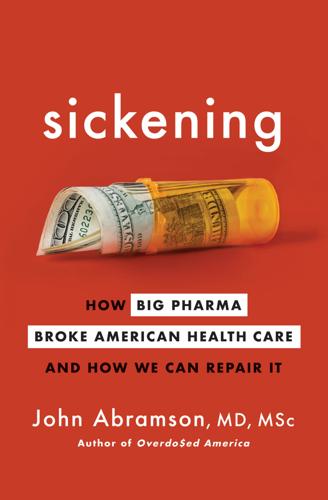
Sickening: How Big Pharma Broke American Health Care and How We Can Repair It
by
John Abramson
Published 15 Dec 2022
By the end of 1923, two of the current giants of insulin production — Eli Lilly and the Danish company that later became Novo Nordisk — had begun commercial production of insulin derived from pig pancreases. Improvements in the purity and duration of action of insulin were incremental until the 1970s, when a new era of radical scientific innovation began. Recombinant DNA technology had previously been the stuff of science fiction, but in 1978 scientists from Genentech and City of Hope National Medical Center successfully inserted cloned human DNA fragments that coded for human insulin into the genes of E. coli bacteria. This process allowed vats of E. coli to become factories that produced insulin with exactly the same chemical structure as human insulin.
…
The manufacturers claimed their long-acting analogs provided more even effects over twenty-four hours than intermediate-acting recombinant human insulin did. As a result, they said, the number of insulin-associated hypoglycemic episodes (when blood sugar drops below normal) would decrease. Manufacturing insulin with recombinant DNA technology was heralded as a major scientific breakthrough. Even so, each successive generation of bioengineered insulin should not have been adopted as the treatment of choice without its clinical superiority having been proven. The first of these transitions was from insulin derived from pigs and cows to bioengineered insulin that had exactly the same molecular structure as human insulin.

Global Catastrophic Risks
by
Nick Bostrom
and
Milan M. Cirkovic
Published 2 Jul 2008
Strengthening global tools to fight disease outbreaks, therefore, is sound governmental and intergovernmental policy for humanitarian reasons as well as for national and international security. 20.9 Towards a biologically secure future In addition to defensive measures like improved disease detection and response, a comprehensive biological security strategy must safeguard potentially dangerous biotechnologies. Despite some of the current difficulties in identifYing and implementing safeguards, there are historical reasons for optimism regarding the response of the scientific community. I n the past, when confronted with potentially hazardous research involving recombinant DNA technology, 14 biologists took precautions by adopting guidelines and self-regulatory measures on a particular class of experiment. One reason for this success was that from the beginning biologists enlisted support from prestigious scientific academies (Chyba, 1 980) . These continue to provide a powerful tool today.
…
A greater challenge for biotechnology nonproliferation will be the expansion of safeguards throughout the academic, commercial, and governmental scientific sectors, as well as the international implementation of these measures. Traditional nonproliferation conventions and arms control treaties predominantly address nation states and do not provide adequate models for 14 Recombinant DNA technology facilitated the exchange of genetic material between vastly different organisms and opened new frontiers for molecular biology research, but it also brought with it a number of safety concerns regarding potential harm to laboratory workers and to the public. Biotechnology and biosecurity 475 dealing with the non-state aspects o fthe biotechnology dilemma ( Chyba, 2006).
…
Polarized , Biotechnology and biosecurity 477 type 1 cytokine response and cell-mediated immunity determine genetic resistance to mousepox. Proceedings of the National Academy ofSciences, 1 0 1 (24) , 9057-9062. Church, G.M. (21 May 2005). A Synthetic Biohazard Nonproliferation Proposal. Found at http:/ jarep.med.harvard.eduj S B P fChurch_Biohazard04c.htrnl. Chyba, C.F. (1980). The recombinant DNA debate and the precedent of Leo Szilard. In Lakoff, S .A. (ed.), Science and Ethical Responsibility. pp. 2 5 1-264 (London: Addison Wesley) . Chyba, C.F. (2001). Biological terrorism and public health. Survival, 43(1), 93-106. Chyba, C.F. (2002). Toward biological security. Foreign Affairs, 81(3), 1 2 1 - 1 36.

Machines of Loving Grace: The Quest for Common Ground Between Humans and Robots
by
John Markoff
Published 24 Aug 2015
In other fields, certain issues have forced scientists and technologists to consider the potential consequences of their work, and many of those scientists acted to protect humanity. In February of 1975, for example, Nobel laureate Paul Berg encouraged the elite of the then new field of biotechnology to meet at the Asilomar Conference Grounds in Pacific Grove, California. At the time, recombinant DNA—inserting new genes into the DNA of living organisms—was a fledgling development. It presented both the promise for dramatic advances in medicine, agriculture, and new materials and the horrifying possibility that scientists could unintentionally bring about the end of humanity by engineering a synthetic plague.
…
They agreed that robots that can kill autonomously have already been developed, yet, when it emerged toward the end of 2009, the group’s report proved to be an anticlimax. The field of AI had not yet arrived at the moment of imminent threat. “The 1975 meeting took place amidst a recent moratorium on recombinant DNA research. In stark contrast to that situation, the context for the AAAI panel is a field that has shown relatively graceful, ongoing progress. Indeed, AI scientists openly refer to progress as being somewhat disappointing in its pace, given hopes and expectations over the years,”10 the authors wrote in a report summarizing the meeting.

The Case for Space: How the Revolution in Spaceflight Opens Up a Future of Limitless Possibility
by
Robert Zubrin
Published 30 Apr 2019
However, since the domestication of the dog, twenty thousand years ago, humans have practiced modification of other species to meet our needs, primarily through the practice of selective breeding. In recent years, a series of advances—first the development of genetics, then the discovery of DNA, and now the actual reading of the genetic code and mastery of recombinant DNA techniques—has enormously expanded our abilities in this area. As a result, it will soon be within our capabilities to design ideal pioneering microorganisms and ultraefficient plants well suited to transform a wide variety of extraterrestrial environments. But microorganisms and plants have their limits.
…
It is true that in the past, war has also sometimes imposed challenges on societies, which forced those that rose to meet them to grow against their inclination (while eliminating those that didn't). But warfare is destructive of both the wealth and human potential of a society, and as the level of technology advances, so does the level of destruction. With the advent of nuclear weapons and recombinant-DNA-based bacteriology, warfare of a sufficiently serious nature to induce societal stress among leading states has become unthinkable, as it would lead to the collapse of civilization itself. Frontier shock, the stress induced in a people when they take on the challenge of strange new lands filled with new possibilities and new knowledge, has been a much more interesting and dynamic force.
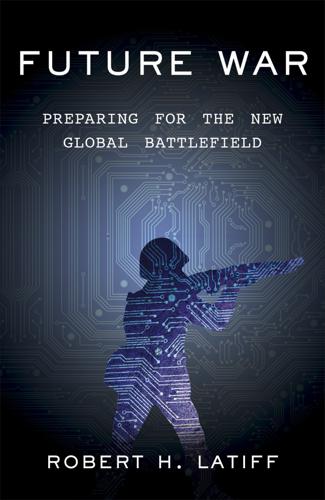
Future War: Preparing for the New Global Battlefield
by
Robert H. Latiff
Published 25 Sep 2017
Since World War II, numerous efforts have been made to deal with issues of technology, weapons research, and ethics. These include the 1946 Nuremberg trials, the 1972 Biological Weapons Convention, the 1993 Chemical Weapons Convention, and efforts by scientists to place restrictions on biomedical, genomic, and nanotechnology research. Scientists attending the Asilomar Conference on Recombinant DNA, near Monterey, California, in 1975 recognized the potential dangers of such DNA research and declared a moratorium until safe and ethical procedures could be developed. The guidelines developed were voluntary, but have been assiduously followed. Rules and theory are one thing, practical applications another.

Hacking the Code of Life: How Gene Editing Will Rewrite Our Futures
by
Nessa Carey
Published 7 Mar 2019
‘Molecular basis of hypoxanthine-guanine phosphoribosyltransferase deficiency in 10 subjects determined by direct sequencing of amplified transcripts’. J. Clin. Invest. (1989); 84: 342–346. 7. https://www.omim.org/entry/300322?search=lesch-nyhan%20mutation&highlight=leschnyhan%20lesch%20nyhan%20mutation#40 * Another researcher, Paul Berg, was awarded the Nobel Prize in 1980 for some foundational work on recombining DNA. 2 CREATING THE TOOLBOX TO HACK THE CODE OF LIFE For the first time in Earth’s history, one species has the capability to alter the genomes of other living organisms, including itself. Because of gene editing this can be performed in any moderately equipped lab and by people with relatively basic scientific skills.
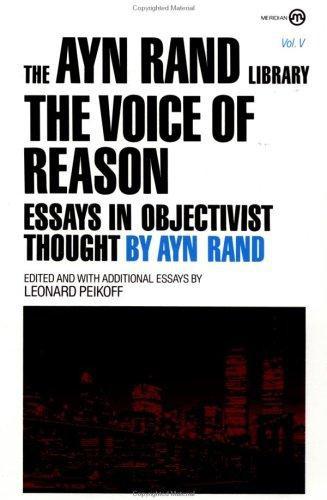
The Voice of Reason: Essays in Objectivist Thought
by
Ayn Rand
,
Leonard Peikoff
and
Peter Schwartz
Published 1 Jan 1989
To condemn it is to make an ethical value judgment, not a Libertarian political statement.”3 A second section in the platform, on health care, proposed to condemn government restrictions on scientific research, particularly “attempts to suppress recombinant DNA research, which has opened the way for increased supply of medically useful human proteins, such as insulin, and shows promise of revealing the nature of hereditary diseases, the structure of bacteria and viruses, and the nature of the immune response.”4 This statement, too, was found to be unacceptable because “scientific research and improvement of medical technology are values that simply have no place in the Libertarian Party platform.... What about those Libertarians who don’t value recombinant DNA research?”5 A leading Libertarian writer and speaker, Walter Block, states this antipathy toward moral principles even more baldly.

The Book of Why: The New Science of Cause and Effect
by
Judea Pearl
and
Dana Mackenzie
Published 1 Mar 2018
Since World War II, a good example of scientists pulling back from the feasible was the 1975 Asilomar conference on DNA recombination, a new technology seen by the media in somewhat apocalyptic terms. The scientists working in the field managed to come to a consensus on good-sense safety practices, and the agreement they reached then has held up well over the ensuing four decades. Recombinant DNA is now a common, mature technology. In 2017, the Future of Life Institute convened a similar Asilomar conference on artificial intelligence and agreed on a set of twenty-three principles for future research in “beneficial AI.” While most of the guidelines are not relevant to the topics discussed in this book, the recommendations on ethics and values are definitely worthy of attention.
…
question randomized controlled trial (RCT), 18, 132–133, 143–147 in causal diagram, 140, 148–149, 149 (fig.) confounders and, 149–150 in epidemiology, 172–173 Fisher on, 139–140, 143–144 as “gold standard,” 231 with noncompliance, causal diagram for, 252–253, 253 (fig.) observational studies versus, 150, 229 recombinant DNA, 369 reduction, of data, 85 regression, 29, 325 See also linear regression regression coefficient, 222–223 regression line, 60–62, 61 (fig.), 221–222 regression to the mean, 57–58, 67 Reichenbach, Hans, 199, 234 Reid, Constance, 271–272 representation acquisition and, 38 of information, in brain, 39 representation problem, 268 reversion, 56–57 Robins, Jamie, 168, 329–330, 329 (fig.), 333–334 on confounding, 150 do-calculus and, 236–237, 241 on exchangeability, 154–156 robots, ix–x AI, 291 causal inference by, 2, 350, 361, 361 (fig.)
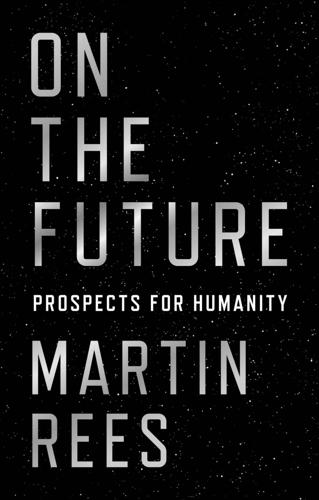
On the Future: Prospects for Humanity
by
Martin J. Rees
Published 14 Oct 2018
Similar techniques are being proposed that could preserve the unique ecology of the Galapagos Islands by eliminating invasive species—black rats in particular. But it’s worth noting that in a recent book, Inheritors of the Earth, Chris Thomas, a distinguished ecologist, argues that the spread of species can often have a positive impact in ensuring a more varied and robust ecology.5 In 1975, in the early days of recombinant DNA research, a group of leading molecular biologists met at the Asilomar Conference Grounds in Pacific Grove, California, and agreed on guidelines defining what experiments should and should not be done. This seemingly encouraging precedent has triggered several meetings, convened by national academies, to discuss recent developments in the same spirit.
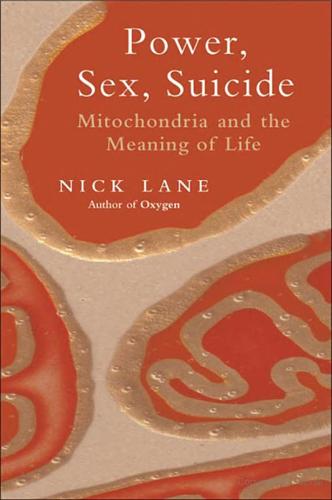
Power, Sex, Suicide: Mitochondria and the Meaning of Life
by
Nick Lane
Published 14 Oct 2005
Such recombination between equivalent chromosomes in the same mitochondrion is known as ‘homologous’ recombination, and does not undermine the principle of uniparental inheritance— it is simply a method of repairing the damage that occurs within a single individual, as we have just noted. So even when mitochondria fuse together, and recombine DNA from different copies of their chromosome, all their DNA is still inherited only from the mother. Nonetheless, if paternal mitochondria manage to survive in the egg, then recombination of paternal and maternal mitochondrial DNA is possible, at least in principle. We know that in humans the paternal mitochondria do get into the egg cell, so it is always possible that some survive.
…
In 2004, Konstantin Khrapko’s group at Harvard reported in Science that 0.7 per cent of the disparate mitochondrial DNA in the patient’s muscles had indeed recombined. So, given the opportunity, human mitochondrial DNA really does recombine. But that is not to say that the recombinants will be passed on. No matter if recombinant DNA is formed in the muscles, it can only influence posterity if it recombines in the fertilized egg. Only then can the recombinant form be inherited. So far, there is no evidence of this, although that is at least partly because very few groups have actually looked. On balance, the statistical evidence from population studies suggests that recombination is extremely rare.
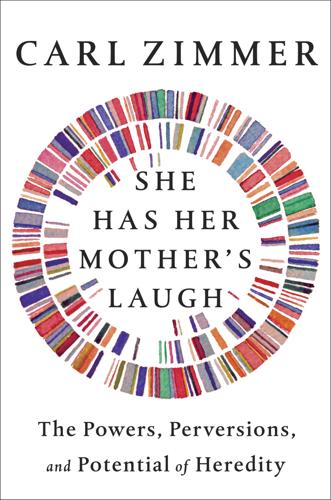
She Has Her Mother's Laugh
by
Carl Zimmer
Published 29 May 2018
When the Office of Technology Assessment looked into the matter, they agreed. There were too many uncertainties—both medical and ethical—to even investigate a technology that might someday alter heredity. “The question of whether and when to begin germ line gene therapy must therefore be decided in public debate,” they concluded. In 1986, the US Recombinant DNA Advisory Committee, which determined what sort of research in genetic engineering could be funded, cut off the money. They flatly declared that they “will not at present entertain proposals for germ line alteration.” And that, for the next three decades, was pretty much that. From time to time, a few scientists would rattle the regulatory cage, arguing that germ line engineering would be a boon to humanity, not a threat.
…
Doudna started small. In January 2015, she hosted a meeting at a cozy inn in the Napa Valley, about an hour from Berkeley. Among the eighteen people who assembled in wine country to talk about CRISPR were David Baltimore and Paul Berg, two eminent biologists who had led similar meetings in the 1970s to discuss recombinant DNA. Now as then, Weismann’s barrier split the conversation in two. The Napa group divided their time talking about tinkering with somatic cells and germ cells. CRISPR might prove superior to viruses as gene therapy, the researchers speculated, because doctors could use it to fix somatic cells with more precision.
…
See also cancers Turkheimer, Eric, 310–11 Turnbull, Doug, 517 23andMe, 180, 182, 240–42 twins and chimerism, 380–82, 384 and CRISPR research, 497 and effects of meiosis on heredity, 151–52 and ethical issues of scientific advances, 541 and freemartins, 370–72, 373–76, 378–79 and genetic screening, 505 and height research, 264–67, 280 and intelligence research, 290, 297–300, 303, 305, 310–11 and Mengele’s research, 187 and microbiomes, 415 and ooplasm transfers, 516 Twins (Newnan, Freeman, and Holzinger), 297–98 twin spotting, 350 Type II diabetes, 216 Tyson, Edward, 254–55 Udolph, Gerald, 389 “The Uniqueness of the Individual” (Medawar), 379 US Army Forces DNA Identification Laboratory, 178 US Food and Drug Administration (FDA), 515, 521 US Recombinant DNA Advisory Committee, 512 US Supreme Court, 93, 541–42 Uyghurs, 307–8 vaccinations, 532–33 vancomycin resistance, 141–42 The Variation of Animals and Plants Under Domestication (Darwin), 43, 48, 52, 54, 442 Verschuer, Otmar van, 94 vertical inheritance, 140 vesicomyid clams, 408, 412 Villermé, Louis-René, 257–58, 267 vinclozolin, 428, 435 Vineland Training School and Carol Buck, 111 and Davenport, 79–81 and eugenics ideology, 84–85, 88–91, 96, 101–2 Goddard’s removal from, 92, 101 and Goddard’s research, 75–79, 81–83, 88–91 and Kite’s fieldwork, 81–83 origin of, 67–68 Pearl Buck’s support of, 113–15 Penrose’s visit to, 120–21 and PKU testing, 131–32 Wolverton’s admission to, 68–73 Virchow, Rudolf, 326 viruses and bacterial restriction enzymes, 487 and chimerism, 392–93, 395, 397–98, 400–401 and CRISPR mechanism, 143–44, 488–89, 524 and gene therapy, 511–12, 532 and horizontal inheritance, 142 and Mendel’s Law, 473–74 and retrotransposons, 441 Visscher, Peter, 151, 266–67, 281–82, 303 Waddington, Conrad, 331–34, 342, 344 Wagner, Richard, 498 Wallace, Douglas, 421 Walsh, Christopher, 368–69 Walsh, Richard, 111–12 water fleas, 475–76 Watson, James, 124–25 Weismann, August and chimerism, 394 and embryonic development research, 328–29, 332–33 and epigenetics, 437 and ethical issues of scientific advances, 543 and genetic vs. nongenetic heredity, 472–73, 478–79 and germ line/soma distinction, 56–60, 143–44, 329, 394, 409, 426, 511, 524, 545–46 and neurogenesis, 347 and ooplasm transfers, 515 Wellcome Trust study, 278 Whalley, Lawrence, 293–94 What Is Intelligence?
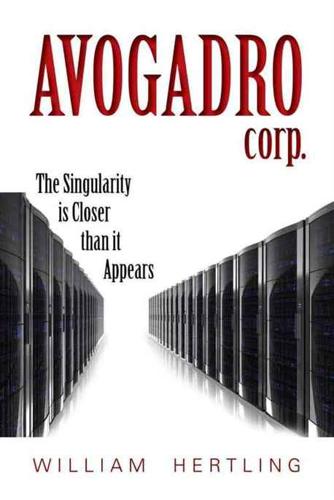
Avogadro Corp
by
William Hertling
Published 9 Apr 2014
Life could emerge from anywhere. With no direction, life could evolve. Everything people were was happenstance and survival. Life could be tampered with, at the most basic building block level, to create new life forms. The possibilities were limitless and spontaneous. * * * Today's biology class focused on recombinant DNA, the technique of bringing together sequences of DNA from different sources, creating sequences not found in nature. At the end of class, Leon headed for the door deep in thought about canine DNA. Suddenly, Mrs. Gellender blocked the doorway. "Do you have a minute, Leon?" Leon looked around to see if any of his friends noticed him.
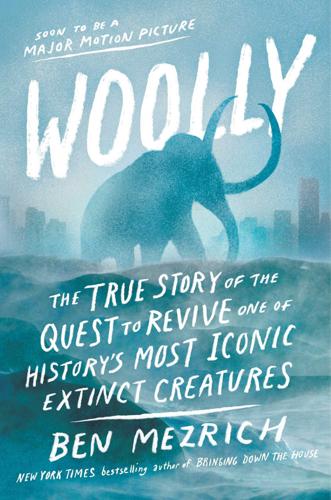
Woolly: The True Story of the Quest to Revive History's Most Iconic Extinct Creature
by
Ben Mezrich
Published 3 Jul 2017
There was so much that was bold and archaic and looming about the place, from the stone architecture of Widener Library to the brick and antique glass of the old dorms like Thayer and Wigglesworth. In contrast, their conversations were so new and modern: crystallography, life sciences, the nascent field of recombinant DNA. Unlike Church, Ting had fallen into biology quite by accident. She had come to Harvard to study math, but while working as a dishwasher in a biology lab to help support herself through college, she had suddenly felt at home. The simple beauty of the natural world held so much in common with the purity of numbers—she and Church could go on and on about the subject.
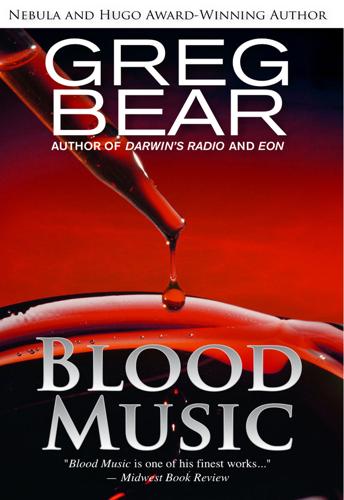
Blood Music
by
Greg Bear
Published 19 May 2014
Biochips had been an area of speculation in the literature for years, but Genetron hoped to have the first working samples available for FDA testing and approval within three months. They faced intense competition. In what was coming to be known as Enzyme Valley—the biochip equivalent of Silicon Valley—at least six companies had set up facilities in and around La Jolla. Some had started out as pharmaceutical manufacturers hoping to cash in on the products of recombinant DNA research. Nudged out of that area by older and more experienced concerns, they had switched to biochip research. Genetron was the first firm established specifically with biochips in mind. Vergil picked up an eraser and rubbed out the notes slowly. Throughout his life, things had always conspired to frustrate him.
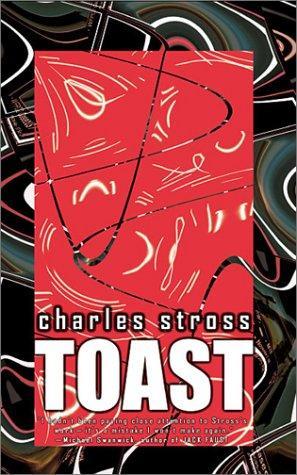
Toast
by
Stross, Charles
Published 1 Jan 2002
They don’t understand how dangerous achieving enlightenment can be.” “What about Mallet’s work?” “What, with the bible bashers?” She shrugged. “Banning fetal tissue transplants is all very well, but it doesn’t block the PCR-amplification pathway to massively parallel processing, does it? Even the Frankenstein Food scare didn’t quite get them to ban recombinant DNA research, and if you allow that it’s only a matter of time before some wet lab starts mucking around encoding public keys in DNA, feeding them to ribosomes, and amplifying the output. From there it’s a short step to building an on-chip PCR lab, then all they need to do is set up a crude operon controlled chromosomal machine and bingo—yet another route through to a hard take-off AI singularity.
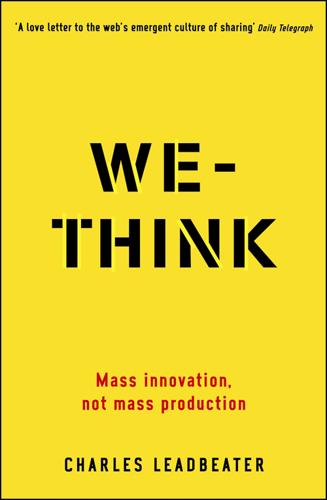
We-Think: Mass Innovation, Not Mass Production
by
Charles Leadbeater
Published 9 Dec 2010
As Dyson put it, alarmingly, in a July 2007 article for the New York Review of Books, ‘Designing genomes will become a personal thing, a new art form as creative as painting or sculpture.’ This is all the more likely if biotechnology becomes a branch of the software industry. Since 1972 genetic engineering has relied on highly specialised techniques that extract and then recombine DNA from cells. It is not a job for amateurs: it takes staff with advanced skills, lots of practical experience, patience, many reagents and a lot of equipment. That could all change, however, with the advent of synthetic biology which allows scientists to create cells by writing ‘DNA programmes’ to make living organisms.
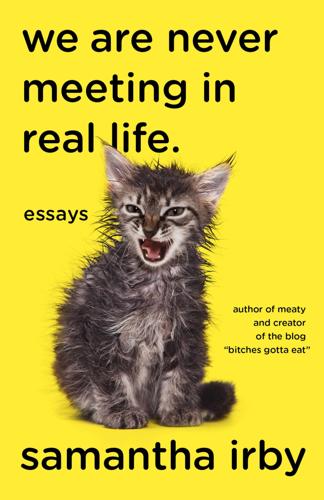
We Are Never Meeting in Real Life
by
Samantha Irby
Published 14 Apr 2017
” — The afternoon of the detective’s call, Cara and I had been studying for a biology test. I had a huge crush on our professor, this swaggering Brit who would roar up to the science building on his Harley-Davidson and never took off his leather vest, not once the entire semester, while teaching us about eukaryotes and recombinant DNA. It was a lecture course that took place in this massive auditorium, which meant that we spent most of our afternoons fighting sleep in the nosebleeds while trying to discern scientific terms through a thick English accent. I was listening to Ani DiFranco (of course) on my headphones because Cara didn’t like to study with noise, but I couldn’t stay the hell awake unless I paired bio vocabulary with lyrics from “Hour Follows Hour.”
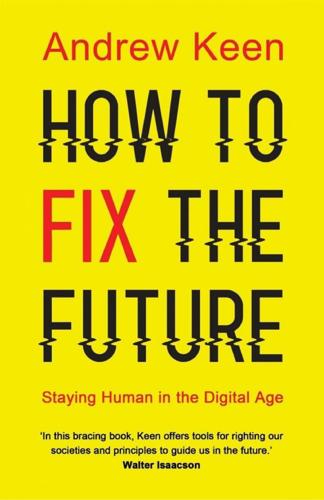
How to Fix the Future: Staying Human in the Digital Age
by
Andrew Keen
Published 1 Mar 2018
Tech-focused from the start, Leland Stanford Junior University opened, tuition-free, in 1891 and has nurtured generation after generation of entrepreneurs. Bill Hewlett and David Packard, the founders of Hewlett-Packard and the founders of the Silicon Valley financial and technological ecosystem, graduated in the 1930s, and since then Stanford’s Office of Technology Licensing has supported such innovations as data analytics, recombinant DNA, and the Google search engine. The Microsoft cofounder and longtime CEO Bill Gates, is, in some ways, the modern reincarnation of Stanford. Having become the richest man in the world in the first half of his life through the use of often unscrupulous and sometimes illegal methods of crushing his rivals, he has spent the second half of his life giving away his billions to those less fortunate than himself.
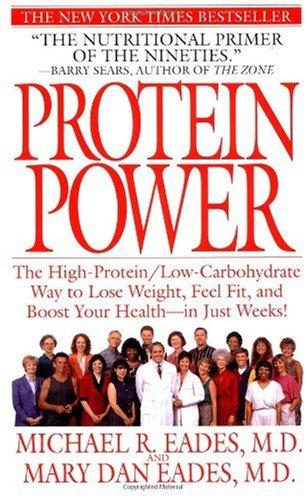
Protein Power: The High-Protein/Low-Carbohydrate Way to Lose Weight, Feel Fit, and Boost Your Health--In Just Weeks!
by
Michael R. Eades
and
Mary Dan Eades
Published 1 Jun 1999
Human growth hormone is a profound anabolic, or tissue-building, hormone produced in the pituitary, a small gland located at the base of the skull, and secreted at intervals throughout the day. It causes growth, repairs tissue, mobilizes fat stores, and shifts the metabolism to the preferential use of fat. Like human insulin, human growth hormone is produced commercially by recombinant DNA, and doctors use it extensively to treat a variety of disorders. Severely burned patients and those with massive soft tissue injuries or those recovering from major surgery all benefit from growth hormone therapy. Children with growth hormone deficiency who would otherwise be doomed to a life of dwarfism achieve normal growth with the administration of recombinant growth hormone.

The End of College: Creating the Future of Learning and the University of Everywhere
by
Kevin Carey
Published 3 Mar 2015
This was nerve-racking because the questions were scored instantly, so if you were bombing, you knew right away. I stumbled a little on the biochemistry in the first midterm but rebounded on genetics and managed to score 90 percent. At that point, the course dove into the really cool stuff: recombinant DNA and the mechanics of cloning using restriction enzymes to cut out specific sections of DNA, paste them into plasmids, and grow them on petri plates in a kind of biochemical purification. That brought us to DNA sequencing and every episode of every police procedural broadcast on CBS since the late 1990s.

Possible Minds: Twenty-Five Ways of Looking at AI
by
John Brockman
Published 19 Feb 2019
At the Washington, Connecticut, meeting he discussed the Cold War tension between engineers (like Wiener) and the administrators of the Manhattan Project (like Oppenheimer): “When [Wiener] warns about the dangers of cybernetics, in part he’s trying to compete against the kind of portentous language that people like Oppenheimer [used]: ‘When I saw the explosion at Trinity, I thought of the Bhagavad Gita—I am death, destroyer of worlds.’ That sense, that physics could stand and speak to the nature of the universe and air force policy, was repellent and seductive. In a way, you can see that over and over again in the last decades—nanosciences, recombinant DNA, cybernetics: ‘I stand reporting to you on the science that has the promise of salvation and the danger of annihilation—and you should pay attention, because this could kill you.’ It’s a very seductive narrative, and it’s repeated in artificial intelligence and robotics.” As a twenty-four-year old, when I first encountered Wiener’s ideas and met his colleagues at the MIT meeting I describe in the book’s introduction, I was hardly interested in Wiener’s warnings or admonitions.

Green Swans: The Coming Boom in Regenerative Capitalism
by
John Elkington
Published 6 Apr 2020
It probably tracks back to the various editions of The Whole Earth Catalog, which I read assiduously between 1968 and 1972.44 Imagine my joy, then, to find myself sitting next to Whole Earth Catalog founder Stewart Brand at the Lovelock centennial event, and across the table from his wife Ryan Phelan, who runs an organization called Revive & Restore.45 I learned that her team had been using the triple bottom line to evaluate their work on saving the horseshoe crab from exploitation by the pharmaceutical industry. Between 500,000 and 750,000 crabs are bled every year as part of product safety testing for drugs, even though there is a safe, effective, and cheaper alternative made with recombinant DNA.46 Happily, Ryan immediately saw the value of the 3R, Responsibility-Resilience-Regeneration, framework. Her appeal to companies like Eli Lilly has been based both on responsibility and cost reduction, she noted, while making the switch would lead to more resilient supply chains and estuarial ecosystems—and radically reducing the harvest of crabs would help regenerate an extraordinary species, which is around 450 million years old.47 Of the crabs bled, somewhere between 5 and 30% are thought to die.48 Happily, Eli Lilly has pledged to cut its use of the active ingredient extracted in this way by 90% in the next few years.

Life After Google: The Fall of Big Data and the Rise of the Blockchain Economy
by
George Gilder
Published 16 Jul 2018
The 2017 Asilomar conference called to mind a conference held at the same place in February 1975, at which scientists warned about the future of technology—in that case, genetic engineering. They feared that experiments enabling molecular biologists to splice DNA from two different organisms, producing novel recombinant DNA molecules and chimeras, would threaten all human life. Within a decade, so the attendees prophesied, “scientists will be able to create new species and carry out the equivalent of 10 billion years of evolution in one year.” More than four decades later, the hopes and fears of the 1975 Asilomar conference are nowhere near to coming true.
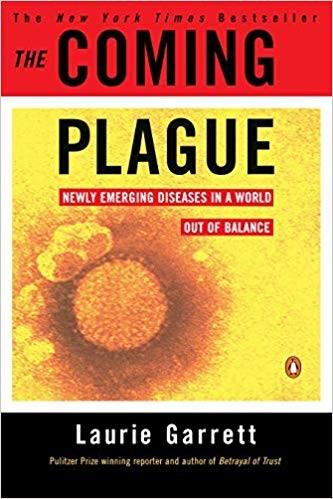
The Coming Plague: Newly Emerging Diseases in a World Out of Balance
by
Laurie Garrett
Published 31 Oct 1994
If chance favored a certain type of organism when it surfaced, the microbe would thrive. In the meantime, the endless DNA dance of transposons, mutations, plasmids, and sexual conjugation went on, its pace essentially unaltered by environmental events. Genes shuffled and recombined, swapped and moved, whether or not the microbes were threatened. “All DNA is recombinant DNA,” said the bible of biology, Molecular Biology of the Gene.96 “Genetic exchange works constantly to blend and rearrange chromosomes.” The emergence of, say, a penicillin-resistant Streptococcus was a “rare event, typically occurring in less than one per million cell divisions.” Of course, Streptococcus underwent more than a million individual cell divisions in twenty-four hours, starting with a single bacterium and expanding exponentially.
…
Then, if the drug were poured into the petri dish, 9,999,999 bacteria would die, but that one resistant E. coli would survive, and divide and multiply, passing its genes for resistance on to its progeny. In 1988, however, John Cairns of the Harvard School of Public Health challenged that central dogma of biology.99 Using recombinant DNA techniques, his laboratory made a set of specific E. coli mutants that had unusual nutritional needs. They then altered the bacteria’s environments, making them deficient in chemicals the mutants couldn’t manufacture on their own. And they showed that the E. coli would specifically change two separate sets of genes to adapt to the situation and survive, doing so in far less time than random mutation would permit.
…
Sandorp, et al., “Epidemic Visceral Leishmaniasis in Sudan: A Randomized Trial of Aminosidine Plus Sodium Stibogluconate Versus Sodium Stiboglutinate Alone,” Journal of Infectious Diseases 168 (1993): 715–19. 8. Revolution 1 J. D. Watson and F. H. C. Crick, “A Structure for Deoxyribonucleic Acid,” Nature 171 (1953): 737. 2 There are many excellent resources for further information about recombinant DNA techniques. They include P. Berg and M. Singer, Dealing with Genes: The Language of Heredity (Mill Valley, CA: University Science Books, 1992); M. Singer and P. Berg, Genes to Genomes (Mill Valley, CA: University Science Books, 1991); and J. D. Watson, N. H. Hopkins, J. W. Roberts, et al., Molecular Biology of the Gene (4th ed.; Menlo Park, CA: Benjamin/Cummings Publishing Co., 1987). 3 For an excellent review of McClintock’s work and its subsequent impact on molecular biology, see N.

The Empathic Civilization: The Race to Global Consciousness in a World in Crisis
by
Jeremy Rifkin
Published 31 Dec 2009
All that’s required is an off-the-rack laboratory, which can be installed in a basement for as little as $10,000. Many of the most dangerous pathogens in the world can be grown or are available through commercial channels. Restriction enzymes and other biotech materials can also be secured, often with little or no background security checks. Recombinant DNA “designer” weapons can be created in many ways. New biotech processes can be used to program genes into infectious microorganisms to increase their antibiotic resistance, virulence, and environmental stability. It is possible to insert lethal genes into harmless microorganisms, resulting in biological agents that the body recognizes as friendly and does not resist.
…
oil OPEC embargo shortages old science Old Testament Ong, Walter online network relationships On the Aesthetic Education of Man (Schiller) “On the Basis of Morality” (Schopenhauer) open-source code open system optics oral cultures Origin of Species, The (Darwin) orphans Ortega y Gasset, José Orton, William ostracization ostracism Oxford University oxygen Pachauri, Rajendra Kumar Pagels, Elaine Pakistan Palazzo Strozzi (Florence) Paleolithic people pamphlets panentheism Panksepp, Jaak parasocial relationships parenting cultural variability in “good enough” historical views of in late Middle Ages nurturing, and materialism in Roman Empire in Romantic era Paris partially closed system Passion of the Christ, The (film) patent law pathogens Patriarcha (Filmer) patriarchy Patten, Bernard Pauline Christians Paul, Saint Peace of Westphalia peak global oil peak globalization peer-to-peer sharing peer production Penguin Encyclopedia of Popular Music, The People of the Book per capita income perfectibility performance contract Pergamon Perinbanayagam, Robert permafrost melt Persian Gulf personal growth personal history personality perspective, in art perspective-taking petrochemicals Pew (research center) Internet and American Life Project 2007 report poll on homosexuality survey on blogging survey on women’s progress Philips (company) Philosophical Transactions of the Royal Society Philosophy of Electrical Psychology, The (Dods) Philosophy of Money, The (Simmel) physiological synchrony Piaget, Jean Picasso, Pablo pioneer stage plant cultivation plants Plato play empathy and pretend playgrounds Pliocene era Polanyi, Karl Polanyi, Michael polytheism poor Port Huron statement posture post-World War II society poverty power grids Power of Empathy, The (Ciaramicoli and Ketcham) power plant buildings Preface to Plato (Havelock) preindustrial societies preschooler Presentation of Self in Everyday Life, The (Goffman) pretend play Prigogine, Ilya primates Prince, The (Machiavelli) Princess of Wales (Lady Diana Spencer) Principles of Psychology, The (James) print cultures print revolution print text privacy private property process questions Procter & Gamble progress proletariat property property rights Protestant Reformation Protestants Protestant work ethic proto-industrial revolution protospeech Psychiatry psychoanalysis psychodrama psychological consciousness psychology Psychology Today public schools public service Purple Rose of Cairo, The (film) putting-out system quality of life quality time Quispel, Gilles Ra radio railroads Rain Man (film) Ramachandran, Vilayanur Randall, John H., Jr. rare words Rat Collective rationalists Rawlings, John reading reality of archaic man reality principle reality TV reason Age of versus faith Rebel Without a Cause (film) reciprocity recombinant DNA reconciliation record keeping Reed, Edward S. refugees Reid, Thomas relational self religion decline of See also specific religions religiosity religious societies Renaissance Renault-Nissan renewable energies renouncers resonance circuits Restoration of the Self, The (Kohut) restorative justice Reuter, Paul Julius Revolution of 1848 revolutions agricultural American communications consciousness counterculture First Industrial French Information and Communications Technology print proto-industrial Second Industrial Third Industrial transportation Rieber, Robert W.

The New Harvest: Agricultural Innovation in Africa
by
Calestous Juma
Published 27 May 2017
Insect-resistant traits are found to have the greatest impact in warm, tropical places where pests are more prevalent and where insecticides and inputs are not widely used—namely, in emerging countries. For example, because of pest attacks, cotton was, until the early 1990s, the target of 25% of worldwide insecticide use.15 Recombinant DNA engineering of a bacterial gene that codes for a toxin lethal to bollworms resulted in pest-resistant cotton, increasing profit and yield while reducing pesticide and management costs.16 Leapfrogging in Genetic Technologies 69 Countries such as China took an early lead in adopting the technology and have continued to benefit from the reduced use of pesticides.

The Seventh Sense: Power, Fortune, and Survival in the Age of Networks
by
Joshua Cooper Ramo
Published 16 May 2016
No one had ever heard of the Syrian Electronic Army a year before they were hijacking websites, injecting world-class malicious code into opposition computers, and demonstrating a digital-attack fluency. Of course, the charming side of such a shift is evident too: Walk the Vatican with a historian in your ear, master sourdough in a weekend. There’s something not a little miraculous in the way the networked tools to recombine DNA or hack computer code or design viral software are getting both more sophisticated and simpler. If earlier eras put epoch-making implements into human hands—the knife! the train!—our age is now placing new, mind-shaping forces within instant reach. 7. Back in the fall of 1988, at about the same moment that Danny Hillis and his team were busy peddling their amazing Connection Machine—and trying to smash every world computing-speed record they could find—another device appeared in the world of massively parallel supercomputers.

The Big Nine: How the Tech Titans and Their Thinking Machines Could Warp Humanity
by
Amy Webb
Published 5 Mar 2019
“How Long Until Human-Level AI? Results from an Expert Assessment.” Technological Forecasting and Social Change 78 (2011). Berg, P., D. Baltimore, H. W. Boyer, S. N. Cohen, R. W. Davis, D. S. Hogness, D. Nathans, R. Roblin, J. D. Watson, S. Weissman, and N. D. Zinder. “Potential Biohazards of Recombinant DNA Molecules.” Science 185, no. 4148 (1974): 303. Bostrom, N. “Ethical Issues in Advanced Artificial Intelligence.” In Cognitive, Emotive and Ethical Aspects of Decision Making in Humans and in Artificial Intelligence, Vol. 2, edited by I. Smit and G. E. Lasker. Windsor, ON: International Institute for Advanced Studies in Systems Research and Cybernetics, 2003. .
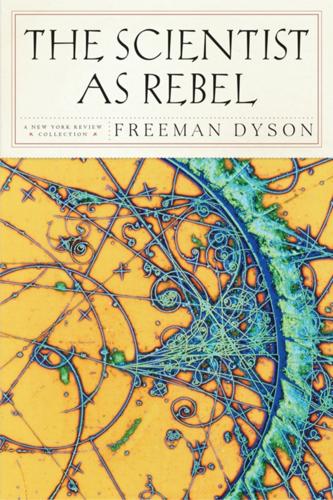
The Scientist as Rebel
by
Freeman Dyson
Published 1 Jan 2006
Both of them were not only great scientists but also political activists, frequently engaged with political and social problems. Why did they not act? Why did they not at least try to achieve a consensus of physicists against nuclear weapons before it was too late? Perhaps they would have acted, if Joseph Rotblat had been there to urge them on. Thirty-six years later, the sudden discovery of recombinant DNA technology presented a challenge to biologists, similar to the challenge which the discovery of fission had presented to physicists. The biologists promptly organized an international meeting at Asilomar, at which they hammered out an agreement to limit and regulate the uses of the dangerous new technology.

The Future of Money
by
Bernard Lietaer
Published 28 Apr 2013
Dr Jonathan Kind, Professor of Genetics at MIT, says, 'In the past, one of the strengths of American bio-medical science was the freedom of exchange of materials, strains of organisms, and information.. . But .., [that the universities are trying to make money from the commercial potential of recombinant DNA], if you sanction and institutionalise private gain and patenting of micro-organisms, then you don't send out your strains because you don't want them in the public sector. That's already happening now. People are no longer sharing their strains of bacteria and their results as freely as they did in the past.
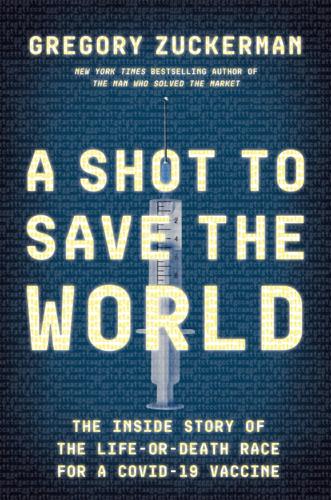
A Shot to Save the World: The Inside Story of the Life-Or-Death Race for a COVID-19 Vaccine
by
Gregory Zuckerman
Published 25 Oct 2021
“This is not possible,” he said, in his French-infused English. Bancel understood how hard producing proteins could be. He had built proteins in graduate school and at Eli Lilly the old-fashioned way, which involved placing a human gene in bacteria or yeast, a laborious and challenging process. Yes, a “recombinant DNA” revolution had begun in the early 1980s, as upstart companies like San Francisco–area Genentech cut and pasted DNA sequences to create proteins that served as medicines, such as human insulin, and Humira, a new kind of anti-inflammatory that eventually eased Schrum’s pain. But not every protein could be produced in the lab.

The Deep Learning Revolution (The MIT Press)
by
Terrence J. Sejnowski
Published 27 Sep 2018
Almost overnight, artificial intelligence had gone from being judged a failure to being perceived as an existential threat. This is not the first time an emergent technology has seemed to pose an existential threat. The invention, development, and stockpiling of nuclear weapons threatened to blow up the world, but somehow we have managed to keep that from happening, at least until now. When recombinant DNA technology first appeared, there was fear that deadly engineered organisms would be set loose to cause untold suffering and death across the globe. Genetic engineering is now a mature technology, and so far we have managed to survive its creations. The recent advances in machine learning pose a relatively modest threat compared to nuclear weapons and killer organisms.
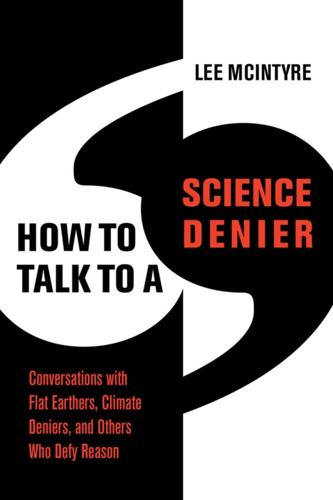
How to Talk to a Science Denier: Conversations With Flat Earthers, Climate Deniers, and Others Who Defy Reason
by
Lee McIntyre
Published 14 Sep 2021
Lynas, Seeds of Science, 251–252. 69. Jonathan Haidt, The Righteous Mind: Why Good People Are Divided by Politics and Religion (New York: Vintage, 2012), 59. 70. Lynas, Seeds of Science, 248. 71. “It was ironic that at just the moment the scientific community was beginning to realise that many experts’ initial fears about recombinant DNA had probably been overblown, the environmental movement was solidifying its position into one of implacable opposition.” Lynas, Seeds of Science, 172. 72. Quotation from an EarthFirst! activist, as quoted in Lynas, Seeds of Science, 183. 73. Lynas, Seeds of Science, 191. 74. Lynas, Seeds of Science, 188. 75.

In Our Own Image: Savior or Destroyer? The History and Future of Artificial Intelligence
by
George Zarkadakis
Published 7 Mar 2016
The sequence is called the ‘genome’.14 Let’s imagine these pairs as Lego pieces. In themselves, they are just pieces of boring chemistry. Put them in the right order, however, and you have the recipe for a complex, living creature. By reshuffling the pieces of base pairs and putting them in different sequences biologists ‘recombine’ DNA molecules. This means that, given the basic parts (the A-T and G-C pairs), one can synthesise the DNA of any organism, if one knows the genome of that organism. Indeed, one can put together completely new organisms, in what is called ‘synthetic biology’. DNA printing makes synthesising DNA easy and cheap to do by having a laser work on the bases and quickly arrive at the desired sequence.15 What is particularly interesting about techniques such as DNA printing is that the correct sequence is a piece of information that can be transmitted and processed just like any digital piece of information.

The Coming Wave: Technology, Power, and the Twenty-First Century's Greatest Dilemma
by
Mustafa Suleyman
Published 4 Sep 2023
He’d begun to worry about what his invention might unleash and wanted to set some ground rules and moral foundations for going forward. At the Asilomar conference center, they asked the difficult questions thrown up by this new discipline: Should we start genetically engineering humans? If so, what traits might be permissible? Two years later they returned in even larger numbers for the Asilomar Conference on Recombinant DNA. The stakes in that sea-lapped hotel were high. It was a turning point in the biosciences, establishing durable principles for governing genetic research and technology that set guidelines and moral limits on what experiments could take place. I attended a conference in Puerto Rico in 2015 that aimed to do something similar for AI.

Inviting Disaster
by
James R. Chiles
Published 7 Jul 2008
Perrow concluded that some classes of technology are inherently open to chains of failure, whether sooner or later. With such machines, adding more safety systems only raises their levels of complexity. He said the systems of most concern are those involved in transforming dangerous substances (such as in a recombinant DNA lab or a nuclear reactor) and that show the characteristics of “tight coupling” and high “interactive complexity.” “Tight coupling” means a time-driven system in which one event leads to another in short order. A down-home example of tight coupling would be a line of fast-moving cars in traffic with too little separation between bumpers.
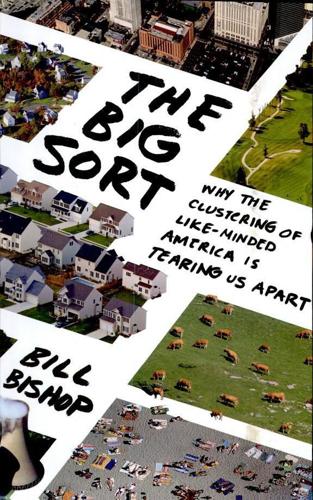
The Big Sort: Why the Clustering of Like-Minded America Is Tearing Us Apart
by
Bill Bishop
and
Robert G. Cushing
Published 6 May 2008
Stem cell research is now clearly a Democratic cause, but that seems more a consequence of divided politics than of either ideology or biomedical research. After all, the first town to place limits on DNA research was Cambridge, Massachusetts. One of the most liberal cities in the United States nearly outlawed genetic research in 1977. "Originally, you evaluated recombinant DNA technology the same way you would evaluate a new kind of pesticide or a large dam," Marcy Darnovsky, associate executive director of the Center for Genetics and Society in San Francisco, told me in 2005. When the religious right came out against embryonic stem cell research, however, it created "this reflexive response to that religious point of view.
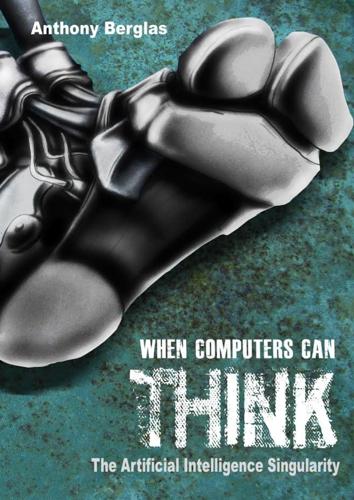
When Computers Can Think: The Artificial Intelligence Singularity
by
Anthony Berglas
,
William Black
,
Samantha Thalind
,
Max Scratchmann
and
Michelle Estes
Published 28 Feb 2015
Realistically it would require a widely demonstrated disaster involving a hyperintelligent machine. By that stage it would be far too late. Asilomar conference A good example of political cooperation was the Asilomar Conference in 1975, in which researchers and lawyers drew up voluntary guidelines on recombinant DNA research. There were widespread concerns that this very new technology could accidentally produce super-microbes that would be impossible to control in the wider environment. Guidelines included strict rules on containing engineered organisms, including performing work on organisms that had been weakened in some manner so that they could not survive outside of laboratory conditions.

What to Think About Machines That Think: Today's Leading Thinkers on the Age of Machine Intelligence
by
John Brockman
Published 5 Oct 2015
This was probably the first time scientists performed an analysis to predict whether humanity would perish as a result of a new technological capability—the first piece of existential-risk research. Of course, nuclear technology did not remain the last dangerous technology that humans have invented. Since then, the topic of catastrophic side effects has repeatedly come up in different contexts: recombinant DNA, synthetic viruses, nanotechnology, and so on. Luckily for humanity, sober analysis has usually prevailed and resulted in various treaties and protocols to steer the research. When I think about the machines that can think, I think of them as technology that needs to be developed with similar (if not greater!)
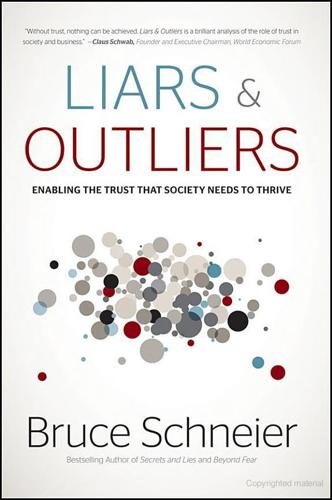
Liars and Outliers: How Security Holds Society Together
by
Bruce Schneier
Published 14 Feb 2012
(4) In the 1970s, cyclists used corticosteroids and psychostimulants such as Ritalin, and newly developed norepinephrine-dopamine reuptake inhibitors such as Pemoline. They were banned, and by the end of the decade assays were developed to detect those substances. In the 1980s, athletes turned to newly developed analogues of endogenous substances made possible through recombinant DNA technology, including human growth hormone, testosterone, anabolic steroids, and synthetic human erythropoietin (EPO). EPO, a glycoprotein hormone that controls red blood cell production, acts to increase oxygenation, an effect valued as highly by endurance athletes as it was by people suffering from anemia.EPO use became rampant in cycling and other sports, and continues to be rampant in spite of bans since the early 1990s and the development in the late 1990s of carbon-isotope ratio tests capable of determining whether substances are made naturally by the body or come from performance-enhancing drugs.

The Complete Thyroid Book
by
Kenneth Ain
and
M. Sara Rosenthal
Published 1 Mar 2005
James Norman, a parathyroid surgeon Hypoparathyroidism Association (hypoparathyroidism.org): provides information that will be helpful if you have calcium problems after thyroid surgery 345 Appendix B Links to Other Conditions Related to Thyroid Disease Depression and Emotional Health American Counseling Association (counseling.org) American Institute of Stress (stress.org) American Psychological Association (apa.org) The Anxiety Disorders Association of America (adaa.org) International Stress Management Association (stress-management-isma.org) The National Association of Social Workers (NASW) (naswdc.org) National Depressive and Manic-Depressive Association (ndmda.org) Women’s Health Childbirth.org (childbirth.org): site that is run by childbirth educators and has many good links to other sources The Hormone Foundation (hormone.org; 1-800-HORMONE): the public education division of the Endocrine Society National Osteoporosis Foundation (nof.org) North American Menopause Society (menopause.org) Pregnancy.org (pregnancy.org): nonprofi t site with many links to good information Heart Health American Heart Association (americanheart.org) 346 LI N KS TO OTH ER CON DITIONS REL ATED TO THYROI D DISE ASE Obesity American Obesity Association (obesity.org) Association for Morbid Obesity Support (obesityhelp.com) Sleep Disorders and Fatigue The CFIDS Association of America (cfids.org): works to conquer chronic fatigue and immune dysfunction syndrome National Center on Sleep Disorder Research (www.nhlbi.nih.gov/about/ncsdr) National Fibromyalgia Association (fmaware.org) Sleepnet.com (sleepnet.com): a good commercial site for sleep disorders Dieting and Weight Dietician.com Glycemic Index (glycemicindex.com) Alzheimer’s Disease Alzheimer’s Association (alz.org) 347 Glossary acute suppurative thyroiditis: a rare form of bacterial thyroiditis, where pus and inflammation occur; treated with antibiotics Adam’s apple: the thyroid cartilage ALARA: acronym for “as low as reasonably achievable” Amiodarone: a potent medicine used to treat heart rhythm disturbances, infamous for causing different types of thyroid problems anaplastic thyroid cancer: a very rare but aggressive, hard-to-treat thyroid cancer with poor outcomes; accounts for about 1.6 percent of all thyroid cancers angina: chest pain resulting from blockages of the blood supply to the heart muscle antithyroglobulin antibody: an antibody associated with Hashimoto’s thyroiditis that sticks to thyroglobulin; interferes with the ability of a laboratory to measure the level of thyroglobulin in the blood, which can be important for thyroid cancer patients antithyroid medication: drugs that are used to treat Graves’ disease in some people by preventing the thyroid from manufacturing thyroid hormone, and occasionally leading to a remission of Graves’ disease; commonly include propylthiouracil (PTU) and methimazole (Tapazole) antithyroid peroxidase (TPO): thyroid antibodies that attack the portion of the thyroid cell responsible for making thyroid hormones; associated with Hashimoto’s thyroiditis 348 apathetic hyperthyroidism: refers to hyperthyroidism without clear symptoms of thyrotoxicosis; usually diagnosed in older individuals (over sixty) arrhythmia: disturbance of the heart rhythm atherosclerotic cardiovascular disease: refers to fatty blockages of blood vessels anywhere in the body; can put you at risk for a heart attack or stroke atrial fibrillation: a type of disordered, rapid, irregular heart rhythm autoimmune: “self-immune” or selfattacking autoimmune disease: a disease where the body attacks its own tissue autoimmune thyroid disease: a thyroid disease involving thyroid antibodies that attack the thyroid gland, as in Hashimoto’s disease or Graves’ disease benign: noncancerous beta-blocker: a type of drug that blocks the effects of adrenaline and slows the heart rate; used in people with thyrotoxicosis bisphosphonates: drugs that help to form bone; recommended to postmenopausal women body mass index (BMI): the best measurement of appropriate weight; calculated by dividing your weight (in kilograms) by your height (in meters) squared bradycardia: slow heartbeat; associated with hypothyroidism carcinoembryonic antigen (CEA): a protein made by medullary thyroid cancer cells, which can be measured and used GLOSS ARY as a marker for the presence of this type of cancer catecholamines: adrenaline and related hormones chemosis: bloodshot, red, irritated eyes choriocarcinoma: when a molar pregnancy becomes cancerous; also known as cancer of the chorion (the chorion secretes the vital hormone human chorionic gonadotropin—HCG); can cause thyrotoxicosis congenital hypothyroidism: hypothyroidism that is present from birth congestive heart failure: weakening of the pumping of the heart cretinism: stunted physical and mental development because of severe hypothyroidism in the fetus and in childhood; usually caused by iodine deficiency in underdeveloped geographic regions CT scan: an x-ray using computerized axial tomography cyst: a fluid-filled lump Cytomel: the brand name of liothyronine sodium, also known as L-T3 by physicians, which is the pharmaceutical version of triiodothyronine, or T3 differentiated thyroid cancer cells: cancer cells that retain the functional features of normal thyroid follicular cells dry eye syndrome: when tear production is inadequate or the tears evaporate so quickly that your eyes are left gritty and irritated with every blink; sometimes the result of an autoimmune disease dysthyroid orbitopathy: another term for thyroid eye disease ectopic thyroid gland: thyroid gland found in the wrong place, such as the middle of the chest, sometimes even inside the heart, or lower in the body; results in defective thyroid function and congenital hypothyroidism endemic goiter: a hypothyroid goiter caused by iodine deficiency euthyroid: normal levels of thyroid hormone euthyroid diffuse goiter: goiter without any evidence of nodules or cysts that makes the proper amount of thyroid hormone euthyroid Graves’ disease: a type of Graves’ disease where there are no symptoms of thyrotoxicosis but there is distinctive exophthalmos euthyroid multinodular goiter: goiter with multiple nodules; feels like a bag of marbles exophthalmometer: an instrument that measures the degree to which the eyes protrude from the skull; used in people with exophthalmos exophthalmos: bulging eyes; a symptom of thyroid eye disease fine-needle aspiration biopsy: where a very thin needle, attached to a plastic syringe, is pushed through your skin and into a nodule while the syringe plunger is gently pulled back, taking out material from the nodule, which is then smeared on glass slides to be viewed under a microscope and evaluated by a pathologist FNA: fine-needle aspiration follicular thyroid cancer: a type of thyroid cancer that accounts for about 10 percent of all thyroid cancers free T4: the only portion of all of the T4 that is not bound to blood proteins and is able to be taken up into each body cell and do the job of effective thyroid hormone free T4 test: the appropriate blood test to measure free T4 levels generalized anxiety disorder (GAD): a psychiatric/psychological disorder that involves persistent worry and anxiety without any relief, despite good reasons for relief from such worry gestational hyperthyroidism: when hyperthyroidism develops during pregnancy gestational hypothyroidism: when hypothyroidism develops during pregnancy 349 GLOSS ARY gestational thyroid disease: when any thyroid disease develops during pregnancy gestational thyrotoxicosis: refers to a transient form of thyrotoxicosis caused by rising levels of human chorionic gonadotropin (HCG), which stimulate the thyroid gland to make thyroid hormone gestational trophoblastic neoplasia: when the placental tissue transforms into small cysts, which overtake the womb, usually destroying the fetus within the first few months of pregnancy; results in thyrotoxicosis glycemic index (GI): measures the rate at which various foods convert to glucose, which is assigned a value of up to 100; higher numbers indicate a more rapid absorption of glucose, which helps to distinguish simple carbohydrates (or simple sugars) from more complex or nutrientdense carbohydrates (such as grains) goiter: enlarged thyroid gland goitrogens: substances that can block thyroid hormone formation; found in a variety of foods, such as cabbage or other foods from the Brassica family Graves’ disease: an autoimmune thyroid disease that causes hyperthyroidism Graves’ ophthalmopathy (GO): another term for thyroid eye disease Hashimoto’s disease: another term for Hashimoto’s thyroiditis Hashimoto’s thyroiditis: a major cause of hypothyroidism; an autoimmune thyroid disease, where antibodies attack the thyroid gland, causing it to become dysfunctional and usually resulting in hypothyroidism Hashitoxicosis: a type of Hashimoto’s disease, where thyroid hormone leaks out from the gland, causing thyrotoxicosis high-density lipoprotein (HDL): the “good cholesterol”; should be at least 40 mg/dL hypercholesterolemia: high cholesterol hypertension: high blood pressure 350 hyperthyroid: overactive thyroid gland usually causing thyrotoxicosis hyperthyroidism: the state of having an overactive thyroid gland, or being hyperthyroid hypocalcemia: low calcium levels, which can lead to debilitating symptoms hypoparathyroidism: when your parathyroid glands do not make sufficient amounts of parathyroid hormone (PTH); usually the result of damage during thyroid surgery, resulting in hypocalcemia, which can be temporary or permanent hypoplastic thyroid: a thyroid smaller than normal; usually results in congenital hypothyroidism hypothalamic-pituitary dysgenesis: a failure in the normal formation or function of the pituitary gland and/or hypothalamus that can lead to congenital hypothyroidism hypothalamus: a part of the brain that is just above the pituitary gland, which helps control the pituitary gland and the thyroid gland by releasing TSH-releasing hormone (TRH) hypothyroid: inadequate levels of thyroid hormone, causing a range of debilitating symptoms; associated with low energy and a slowing down of body cells hypothyroid goiter: the most common type of goiter; caused by inadequate thyroid hormone levels resulting in subtle or dramatic elevations of TSH levels, which stimulate the thyroid gland to grow; can be endemic or caused by Hashimoto’s disease hypothyroidism: the state of having an underactive thyroid gland, or being hypothyroid I-131: one type of iodine isotope used in thyroid scans and treatment I-131 dosimetry: the method used to figure out the maximum safe I-131 dose, beyond which there are unacceptable effects on the bone marrow iodine: a crucial element the thyroid gland needs to make thyroid hormone GLOSS ARY iodine deficiency: when not enough iodine from food is available to the thyroid, causing hypothyroidism and goiter; in children or infants causes mental retardation, short stature, or cretinism isotope: a form of an element, such as iodine, which is often radioactive or unstable isthmus: middle part of the thyroid gland levothyroxine sodium: thyroid hormone made by a pharmaceutical company in pill form; also called L-T4 by physicians or T4 by the public lobectomy: surgical removal of one lobe of the thyroid gland low-density lipoprotein (LDL): the “bad cholesterol”; should be less than 100 mg/dL low-iodine diet (LID): a special diet low in iodine (not sodium), which can maximize the sensitivity and effectiveness of radioactive iodine (RAI) scans or treatments for thyroid cancer lymph nodes: small nodules containing small white blood cells that stimulate the immune system to fight infection; cancer cells may grow in lymph nodes, which are removed during the course of thyroid cancer surgery malignancy: cancer malignant: cancerous medullary thyroid cancer: a type of thyroid cancer that is sometimes genetically inherited and comes from the parafollicular cells of the thyroid; treated with surgery metastatic: spreading beyond the site of origin, as in metastatic cancer methimazole (Tapazole): one commonly used brand of thionamides mild hypothyroidism: another term for subclinical hypothyroidism millicurie: a unit of measurement of radioactivity used for dosing radioactive iodine for scans or treatment molar pregnancy: gestational trophoblastic neoplasia, also known as a hydatidiform mole MRI: a scan using magnetic resonance imaging myocardial infarction: another term for heart attack neck dissection: performed during a thyroidectomy, where the surgeon systematically removes any deposits of tumor that have spread to lymph nodes in the neck neonatal hypothyroidism: hypothyroidism that develops within the first twentyeight days of life of a newborn; if left untreated, can lead to cretinism nodules: lumps obesity: defined as a body mass index (BMI) between 30 and 34.9 oncology: the study of cancer orbital decompression surgery: a surgical procedure that can remove bone from the eye socket and expand the area alongside the eyeball so that swollen tissue can move into it; a corrective surgery in cases of severe thyroid eye disease osteoporosis: bone loss palpitations: rapid, forceful heartbeat panic attack: a cascade of physical symptoms associated with adrenaline and the “flight-or-fight” response (feelings of nausea, vertigo, cold sweat, choking sensations, palpitations, and shakiness) papillary thyroid cancer: a type of thyroid cancer that is usually treatable with surgery and radioactive iodine; accounts for about 80 percent of all thyroid cancers parathyroid gland: “near the thyroid”; other glands close to the thyroid gland that make parathyroid hormone (PTH) parathyroid hormone (PTH): hormone that causes the kidneys to retain calcium in the blood while releasing phosphorus into the urine; also increases the activation of vitamin D, which enhances the absorption of calcium and phosphorus from food and beverages Pendred syndrome: a condition in which an affected person is deaf-mute with a large goiter; the result of a dysfunctional 351 GLOSS ARY inner ear as well as deficient thyroid hormone production, causing goiter and hypothyroidism peripheral vascular disease: when atherosclerotic cardiovascular disease affects arteries that feed your arms or your legs, causing circulation problems and numbness pituitary gland: acts as a “hormone thermostat”; gland located in the brain that makes thyroid stimulating hormone (TSH) as well as other hormones postpartum thyroiditis: a general label referring to silent thyroiditis occurring after delivery, causing mild hyperthyroidism and a period of hypothyroidism propranolol: a commonly used brand of beta-blocker proptosis: protrusion or bulging of the eyeball; associated with thyroid eye disease propylthiouracil (PTU): one commonly used type of thionamides radioactive iodine: iodine that is radioactive; also called a radioactive isotope of iodine RAI: radioactive iodine RAIU: radioactive iodine uptake, which is the percentage of a dose of radioactive iodine that is taken up by the thyroid over the course of a day recurrent laryngeal nerve: a nerve that supplies the voice box and vocal cords; can be damaged during a thyroidectomy resistance to thyroid hormone (RTH): another term for thyroid hormone resistance Riedel’s thyroiditis: the rarest form of thyroiditis, in which the thyroid gland is invaded by scar tissue, infiltrating throughout the gland and binding it to surrounding portions of the neck salivary stones: refers to the swelling of one or more salivary glands (located under the ears and under the lower jaw) because of partial blockage of the salivary ducts by dried saliva; a com- 352 plication of RAI treatment for thyroid cancer selective estrogen receptor modulators (SERMs): a class of drugs that help to prevent bone loss; recommended in postmenopausal women SESTAMIBI: a type of scan used in nuclear medicine, sometimes used in thyroid imaging silent thyroiditis: a form of thyroiditis so named because it avoids detection until symptoms of thyrotoxicosis (and sometimes hypothyroidism thereafter) become severe; usually resolves on its own sleep deprivation: being deprived of the recommended hours of sleep for healthy adults sleep disorder: a physical disorder that interrupts deep, restful sleep; often not recognized by the sufferer, who may have sleep deprivation stable iodine: normal, or nonradioactive, iodine subacute thyroiditis: also called “painful thyroiditis”; a rare type of shortlived thyroiditis that may be viral in origin; symptoms are pain and infl ammation of the thyroid and transient thyrotoxicosis subclinical hyperthyroidism: mild hyperthyroidism with few or no symptoms or thyrotoxicosis subclinical hypothyroidism: refers to hypothyroidism that is very mild, meaning that there are few or no symptoms T3: short for triiodothyronine T4: short for thyroxine tachycardia: fast heartbeat (or racing heart); associated with thyrotoxicosis technetium: a type of isotope used for thyroid scans thionamides: a class of drugs used as antithyroid medication Thyrogen (rhTSH): a pharmaceutically prepared version of TSH made using recombinant DNA technology; synthetic GLOSS ARY TSH used in whole body scans and other tests for thyroid cancer patients thyroglobulin: a protein that is unique to thyroid cells and is the source of thyroid hormone formation thyroglobulin test (TG test): a test that measures the amount of thyroglobulin in the blood, useful as a marker for thyroid cancer cells thyroid antibodies: antibodies from white blood cells that target the thyroid gland, causing an autoimmune disease thyroid antibody testing: a blood test that checks for the presence of thyroid antibodies thyroid-associated ophthalmopathy: another term for thyroid eye disease thyroid dysgenesis: abnormal formation of the thyroid gland; a common cause of congenital hypothyroidism thyroid dyshormonogenesis: a term encompassing a variety of conditions in which the thyroid gland is unable to manufacture thyroid hormone; a cause of congenital hypothyroidism thyroidectomy: surgical removal of the thyroid gland; can be total or partial thyroid extract: a preparation from dried, cleaned, powdered thyroid glands from cows or pigs; also known as natural thyroid hormone thyroid eye disease (TED): also known as Graves’ ophthalmopathy (GO) or Graves’ orbitopathy; tends to strike people with Graves’ disease and is an eye disease causing bulging, grittiness, redness, double vision, and a range of other eye symptoms thyroid follicular cells: the cells that produce thyroid hormone, which have receptors for TSH thyroid gland: butterfly-shaped gland typically located in front of the windpipe (trachea) just above the midline bony notch in the top of the breastbone (sternal notch) thyroid hormone: a hormone made by the thyroid gland that serves as the “speed control” for all body cells; types of thyroid hormone are thyroxine (T4) and triiodothyronine (T3) thyroid hormone resistance syndrome (Refetoff syndrome): a rare, inherited disease that results in a person being born with a resistance to his or her own thyroid hormone; caused by a mutation in the gene that makes the receptor for thyroid hormone thyroid hormone suppression therapy: a high dosage of levothyroxine for the purposes of suppressing TSH thyroiditis: inflammation of the thyroid gland; usually causes hypothyroidism thyroid lobe: one side, or lobe, of the thyroid; as it is butterfly shaped, a lobe would be one “wing” thyroid lymphoma: an extremely rare type of thyroid cancer caused by cancerous white blood cells; accounts for less than 3 percent of all thyroid cancers thyroid scan: a test where an image or picture is taken using special radiation detection cameras and radioactive isotopes that “light up” the thyroid for the camera thyroid self-exam: a self-exam of the neck area, which can help find suspicious thyroid lumps or an enlargement of the thyroid that should be evaluated by a doctor thyroid stimulating hormone (TSH): a pituitary hormone that controls the level of thyroid hormone; high or low TSH levels reflect thyroid function thyroid stimulating immunoglobulin (TSI or TSA): a thyroid antibody that sticks to the TSH receptor in the place of TSH, overstimulating the thyroid gland and causing Graves’ disease, or sticks to parts of the eye muscle, causing thyroid eye disease thyroid storm: when symptoms of severe thyrotoxicosis can manifest into a “storm” 353 GLOSS ARY of severe cardiovascular symptoms that warrant emergency attention and admission to an intensive care unit thyrotoxic: describes someone who suffers from thyrotoxicosis thyrotoxic goiter: goiters associated with prolonged thyrotoxicosis; caused by Graves’ disease or toxic nodules thyrotoxicosis: “too much thyroid hormone”; caused by hyperthyroidism, overdose of thyroid hormone medication, toxic nodules, and other types of thyroid conditions causing a speeding up of bodily processes; leads to a range of debilitating symptoms associated with overstressed, exhausted body cells thyroxine (also known as T4): the inactive early form of thyroid hormone; called T4 because it contains four iodine atoms for each hormone molecule; is converted by the body’s cells into T3, the active form of thyroid hormone total T3 test: the appropriate blood test to measure the amount of active thyroid hormone, or T3 levels toxic adenoma: single thyroid nodules that independently make too much thyroid hormone toxic multinodular goiter: when the thyroid gland forms multiple nodules that produce too much thyroid hormone toxic nodules: lumps that make thyroid hormone on their own and do not 354 respond to TSH; can be single nodules or multinodular triiodothyronine (T3): made by the body’s cells out of T4; the active thyroid hormone that activates genes and does the job of thyroid hormone TSH: short for thyroid stimulating hormone TSH-releasing hormone (TRH): a hormone made by the hypothalamus when the thyroid hormone levels are low and causing the pituitary to produce TSH TSH test: a sensitive blood test that assesses whether you have high or low TSH levels; an indicator of whether you have normal levels of thyroid hormone or abnormally high or low levels of thyroid hormone; assesses how the body “feels”—euthyroid, hypothyroid, or thyrotoxic—by looking at the body’s own natural “thermostat” for thyroid hormone ultrasound: a device that uses highfrequency sound waves to produce an echo picture of structures in your body undifferentiated thyroid cancer cells: cancer cells that do not retain the functional features of normal thyroid follicular cells unipolar depression: most common type of depression, characterized by one low, flat mood; frequently a complication of hypothyroidism WBS: whole body scan whole body scan: a scan involving pictures of the whole body, used to track thyroid cancer recurrence Supportive Literature Adan, A.
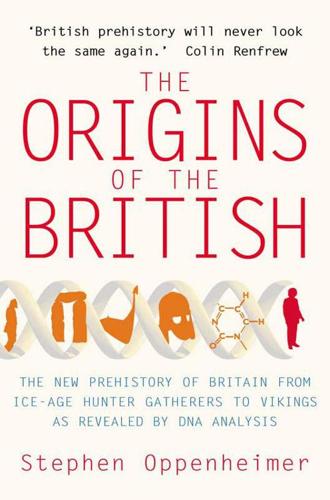
The Origins of the British
by
Stephen Oppenheimer
Published 1 Jul 2007
The mixing here is not that of mass random allocation of genes brilliantly inferred by Gregor Mendel, but tiny crossovers, duplications, deletions and swaps between maternal and paternal DNA contributions. This is known technically as recombination. Luckily for genetic researchers, there are two small portions of our DNA that do not recombine. Non-recombining DNA is easier to trace back through previous generations since the information is uncorrupted during transmission from one generation to the next. The two portions are known as mitochondrial DNA (mtDNA) and the non-recombining part of the Y-chromosome (NRY). Mitochondrial DNA: the Eve gene To say that we get exactly half of our DNA from our father and half from our mother is not quite true.
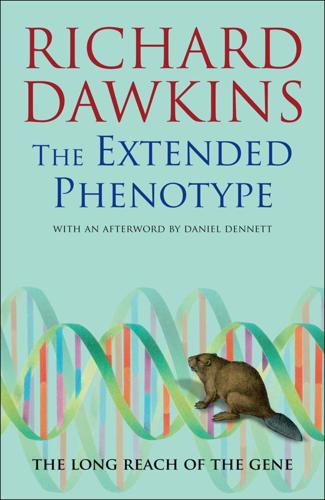
The Extended Phenotype: The Long Reach of the Gene
by
Richard Dawkins
Published 1 Jan 1982
But once we deeply imbibe the fundamental truth that an organism is a tool of DNA, rather than the other way around, the idea of ‘selfish DNA’ becomes compelling, even obvious. The living cell, especially the nucleus in eukaryotes, is packed with the active machinery of nucleic acid replication and recombination. DNA polymerase readily catalyses the replication of any DNA, regardless of whether or not that DNA is meaningful in terms of the genetic code. ‘Snipping out’ of DNA, and ‘splicing in’ of other bits of DNA, are also parts of the normal stock in trade of the cellular apparatus, for they occur every time there is a crossover or other type of recombination event.
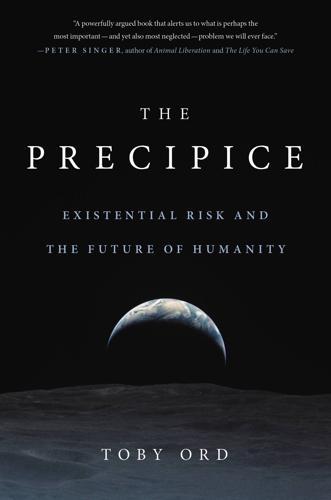
The Precipice: Existential Risk and the Future of Humanity
by
Toby Ord
Published 24 Mar 2020
And they can spend time working with policymakers to ensure national and international regulations are scientifically and technologically sound.54 A good example of successful governance is the Montreal Protocol, which set a timetable to phase out the chemicals that were depleting the ozone layer. It involved rapid and extensive collaboration between scientists, industry leaders and policymakers, leading to what Kofi Annan called “perhaps the single most successful international agreement to date.”55 Another example is the Asilomar Conference on Recombinant DNA, in which leading scientists in the field considered the new dangerous possibilities their work had opened up. In response they designed new safety requirements on further work and restricted some lines of development completely.56 An interesting, and neglected, area of technology governance is differential technological development.57 While it may be too difficult to prevent the development of a risky technology, we may be able to reduce existential risk by speeding up the development of protective technologies relative to dangerous ones.
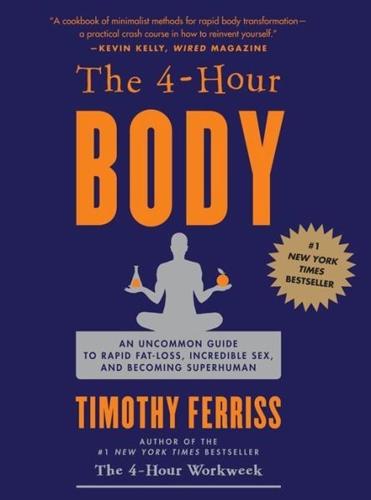
The 4-Hour Body: An Uncommon Guide to Rapid Fat-Loss, Incredible Sex, and Becoming Superhuman
by
Timothy Ferriss
Published 1 Dec 2010
Supplements, often unpatentable molecules and therefore unappealing for drug development, can decrease cholesterol from 222 to 147 in four weeks, as I have done, or they can be inert and do absolutely nothing. Think “all-natural” is safer than synthetic? Split peas are all-natural, but so is arsenic. Human growth hormone (HGH) can be extracted from the brains of all-natural cadavers, but unfortunately it often brings Creutzfeldt-Jakob disease with it, which is why HGH is now manufactured using recombinant DNA. Besides whole foods (which we’ll treat separately as “food”), anything you put in your mouth or your bloodstream that has an effect—whether it’s a cream, injection, pill, or powder—is a drug. Treat them all as such. Don’t distract yourself with labels that are meaningless to us. THE 20-POUND RECOMP GOAL For the vast majority of you reading this book who weigh more than 120 pounds, 20 pounds of recomposition (which I’ll define below) will make you look and feel like a new person, so I suggest this as a goal.
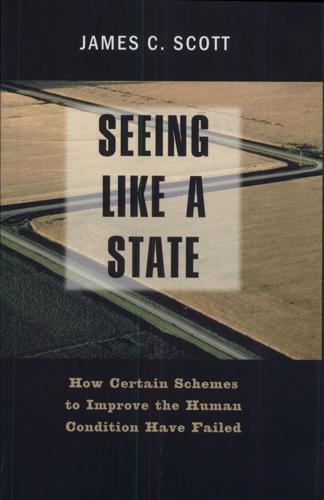
Seeing Like a State: How Certain Schemes to Improve the Human Condition Have Failed
by
James C. Scott
Published 8 Feb 1999
This article is the subject of a scathing critique by Wendell Berry in The Unsettling of America: Culture and Agriculture (San Francisco: Sierra Club Books, 1977), chap. 5. It is remarkable how little of the article, as an "informed" fantasy, holds up from the vantage point of 1997. The revolution in biotechnology and recombinant DNA transfer, surely the most important change in agriculture, is hardly a speck on its horizon, nor are the problems of genetic vulnerability and pesticide use. 32. See Albert O. Hirschman, Development Projects Observed (Washington: Brookings Institution, 1967). 33. For a fine analysis of five such schemes (four of them private and one public, namely, the Tanganyika groundnuts scheme of 1947), see Nancy L.

Against All Enemies
by
Tom Clancy
and
Peter Telep
Published 13 Jun 2011
It had been a painstaking challenge to keep his identity and involvement in the cartel a secret. Neither his wife nor his son knew anything about the Juárez Cartel and how Rojas, then a senior in college, had become involved with the business. Rojas had met a grad student named Enrique Juárez, who his colleagues and professors said was a genius in recombinant DNA gene technology and the insulin manufacturing process. Juárez wanted to establish a pharmaceutical company in Mexico to take advantage of the cheap labor. So impressed was Rojas by the business proposal that he invested a huge portion of his life savings (nearly $20,000) for a partnership in the company.

Future Crimes: Everything Is Connected, Everyone Is Vulnerable and What We Can Do About It
by
Marc Goodman
Published 24 Feb 2015
We can no longer neglect the public policy, legal, ethical, and social implications of the rapidly emerging technological tools we are developing; we are morally responsible for our inventions. There are good examples in history where we as a society have brought together expertise in anticipation of catastrophic risk before it occurred. One such case was the 1975 Asilomar Conference on Recombinant DNA, which was held at Asilomar State Beach in Monterey, California. The event gathered 140 biologists, lawyers, ethicists, and physicians to discuss the potential biohazards of emerging DNA technologies and drew up voluntary safety guidelines. As a result of the event, scientists agreed to stop experiments involving mixing the DNA from different organisms—research at the time that held the potential to have radical, poorly understood, and potentially disastrous consequences.
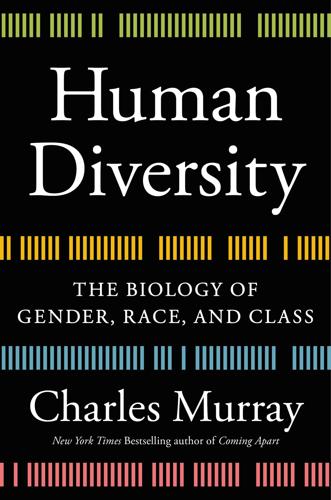
Human Diversity: The Biology of Gender, Race, and Class
by
Charles Murray
Published 28 Jan 2020
Sanger was awarded the 1980 Nobel Prize for Chemistry, which he shared with American biochemists Walter Gilbert and Paul Berg. Gilbert had invented another method for sequencing DNA that subsequently was bypassed in favor of Sanger’s. Berg’s award was for work on the chemistry of nucleic acids, especially those involving recombinant DNA. 4. More precisely, the sequence was said to cover 99 percent of the euchromatic human genome with 99.99 percent accuracy. Euchromatin refers to the 95 percent of the active genome that does not stain strongly with basic dyes when the cell is not dividing. The sequencing did not include a tightly packed form of DNA known as heterochromatin. 5.

Food Allergy: Adverse Reactions to Foods and Food Additives
by
Dean D. Metcalfe
Published 15 Dec 2008
While there are limitations to these approaches, crop scientists and geneticists were Total GM global planting (1996–2006) 120,000 100,000 80,000 60,000 40,000 20,000 04 20 05 20 06 03 20 02 20 01 20 00 20 99 20 98 19 97 19 19 96 0 19 nevertheless able to improve crop yield and food production per unit area of agricultural land several fold by creating new and more productive crops, and by improving agronomic practices. With the advent of molecular biology and biotechnology it became possible not only to identify a desirable phenotypic trait but also to identify the precise genetic material responsible for that genetic trait. Recombinant DNA and plant transformation techniques have made it possible to alter the composition of individual plant components (lipids, carbohydrates, proteins) beyond what is easily possible through traditional breeding practices. Direct and stable gene transfer into plants was first reported in 1984 [7,8].
…
Although the available data suggests that these cases are exceedingly rare, they illustrate the continuing need to control antibiotic residues. The human risk can be minimized by the judicious use of antibiotics and observance of washout periods [164]. Genetically engineered neo-antigens Food biotechnology, the use of recombinant-DNA and cellfusion techniques to confer selected characteristics on plants and animals used for food, can be used to increase agricultural productivity. The transfer of genes from microbes, plants, or animals into foods raises issues about the unintended consequences of such manipulations. Allergenicity could be one such consequence, since genes encode proteins, which potentially could be allergenic [165].

The Wealth of Networks: How Social Production Transforms Markets and Freedom
by
Yochai Benkler
Published 14 May 2006
While these numbers may not seem eye-popping, for populations already living on marginal nutrition, they represent significant differences in quality of life and in physical and mental development for millions of children and adults. 590 The agricultural research that went into much of the Green Revolution did not involve biotechnology--that is, manipulation of plant varieties at the genetic level through recombinant DNA techniques. Rather, it occurred at the level of experimental breeding. In the developed world, however, much of the research over the past twenty-five years has been focused on the use of biotechnology to achieve more targeted results than breeding can, has been more heavily based on private-sector investment, and has resulted in more private-sector ownership over the innovations.

The Rise of the Network Society
by
Manuel Castells
Published 31 Aug 1996
Technologies of life Although biotechnology can be traced all the way back to a 6000 BC Babylonian tablet on brewing, and the revolution in microbiology to the scientific discovery of the basic structure of life, DNA’s double helix, by Francis Crick and James Watson at Cambridge University in 1953, it was only in the early 1970s that gene splicing and recombinant DNA, the technological foundation of genetic engineering, made possible the application of cumulative knowledge. Stanford’s Stanley Cohen and University of California at San Francisco’s Herbert Boyer are generally credited with the discovery of gene-cloning procedures in 1973, although their work was based on research by Stanford’s Nobel Prize winner Paul Berg.
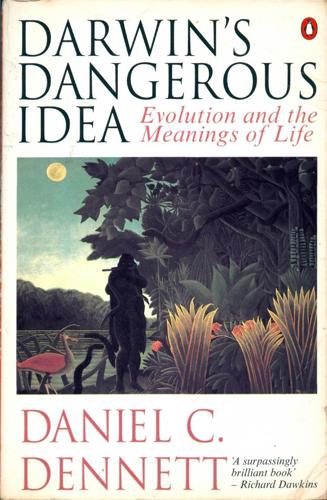
Darwin's Dangerous Idea: Evolution and the Meanings of Life
by
Daniel C. Dennett
Published 15 Jan 1995
What we learn from the example of sex is that a crane of great power may exist that was not created in order to exploit that power, but for other reasons, although its power as a crane may help explain why it has been maintained ever since. A crane that was obviously created to be a crane is genetic engineering. Genetic engineers — human beings who engage in recombinant-DNA tinkering — can now unquestionably take huge leaps through Design Space, creating organisms that would never have evolved by "ordinary" means. This is no miracle — provided that genetic engineers (and the artifacts they use in their trade) are themselves wholly the products of {77} earlier, slower evolutionary processes.
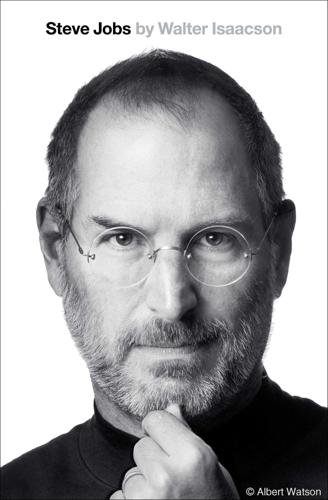
Steve Jobs
by
Walter Isaacson
Published 23 Oct 2011
Something much different was in store for September. CHAPTER EIGHTEEN NeXT Prometheus Unbound The Pirates Abandon Ship Upon his return from Europe in August 1985, while he was casting about for what to do next, Jobs called the Stanford biochemist Paul Berg to discuss the advances that were being made in gene splicing and recombinant DNA. Berg described how difficult it was to do experiments in a biology lab, where it could take weeks to nurture an experiment and get a result. “Why don’t you simulate them on a computer?” Jobs asked. Berg replied that computers with such capacities were too expensive for university labs. “Suddenly, he was excited about the possibilities,” Berg recalled.

Rainbow Six
by
Tom Clancy
Published 2 Jan 1998
When we change things, we cannot easily predict the ramifications of the changes. It's called the Law of Unintended Consequences, something with which the Congress is familiar, isn't it?" "You mean-" "I mean that the reason we have a federal law about environmental impact statements is that it's far easier to mess things up than it is to get them right. In the case of recombinant DNA, we can more easily change the genetic code than we can evaluate the effects those changes will cause a century from now. That sort of power is one that should be used with the greatest possible care. Not everyone seems to grasp that simple fact." Which point was difficult to argue with, the senator had to concede gracefully.